The best NBA teams are often the ones with the most certainties. A night-in, night-out superstar who unfailingly provides elite production and leadership is a prerequisite for success at the highest levels.
That said, sustained dominance over a period of years also requires patience with uncertainty. Young prospects need to hit their high-end outcomes, and rotation-caliber players need to develop into something more in order to keep a team on top.
Here, we’ll scour all 30 squads in search of these high-variance swing pieces—players who’ve either shown nothing at all due to inexperience or offered a mixture of promise and risk to this point in their careers. Where we can’t locate that type of talent on a team, we’ll get creative to find another asset with long-term impact.
These X-factors’ ability to max out or fall short of their potential will go a long way toward determining the multi-year fates of their teams.
Atlanta Hawks: Zaccharie Risacher
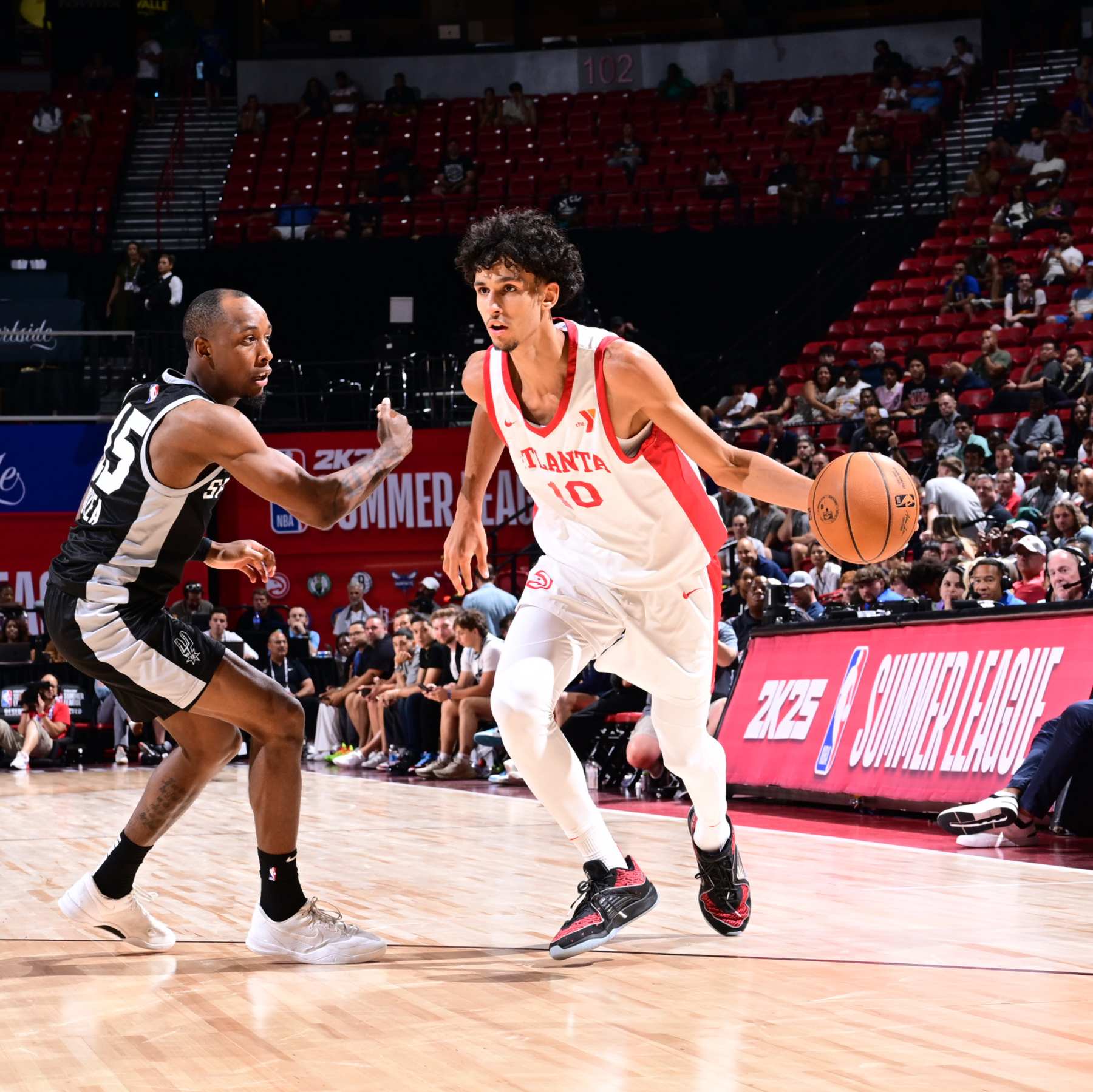
Adam Hagy/NBAE via Getty Images
It won’t be this simple for every team, but the Atlanta Hawks’ possession of Zaccharie Risacher—the No. 1 pick in the 2024 draft—makes for a pretty easy call.
To a greater extent than most top selections, the 19-year-old is something of a blank slate. He stands 6’9″ and has legitimate tools on both ends, but nobody seems certain he can become a star.
While that’s one way to describe a low-ceiling player, the more charitable interpretation of Risacher’s game is that he’s so theoretically malleable and so skilled in varying areas that he has several pathways to being an impactful player.
It’s possible the Frenchman will provide high-end shooting and secondary facilitation as a combo forward, and his length and intelligence suggest he’ll develop into a quality defender. It remains to be seen how much self-sufficient shot creation he’ll provide, but with a three-and-D floor, it’s hard to imagine him going down as a bust.
The Hawks may not be interested in prolonging the Trae Young era for another several years…unless Risacher becomes the kind of gap-filling, low-usage second star who augments Young’s one-way game.
On the other hand, if Risacher is actually something more than a role player, he could be the reason Atlanta warms to the idea of turning the page.
Boston Celtics: 2027 1st-Round Pick
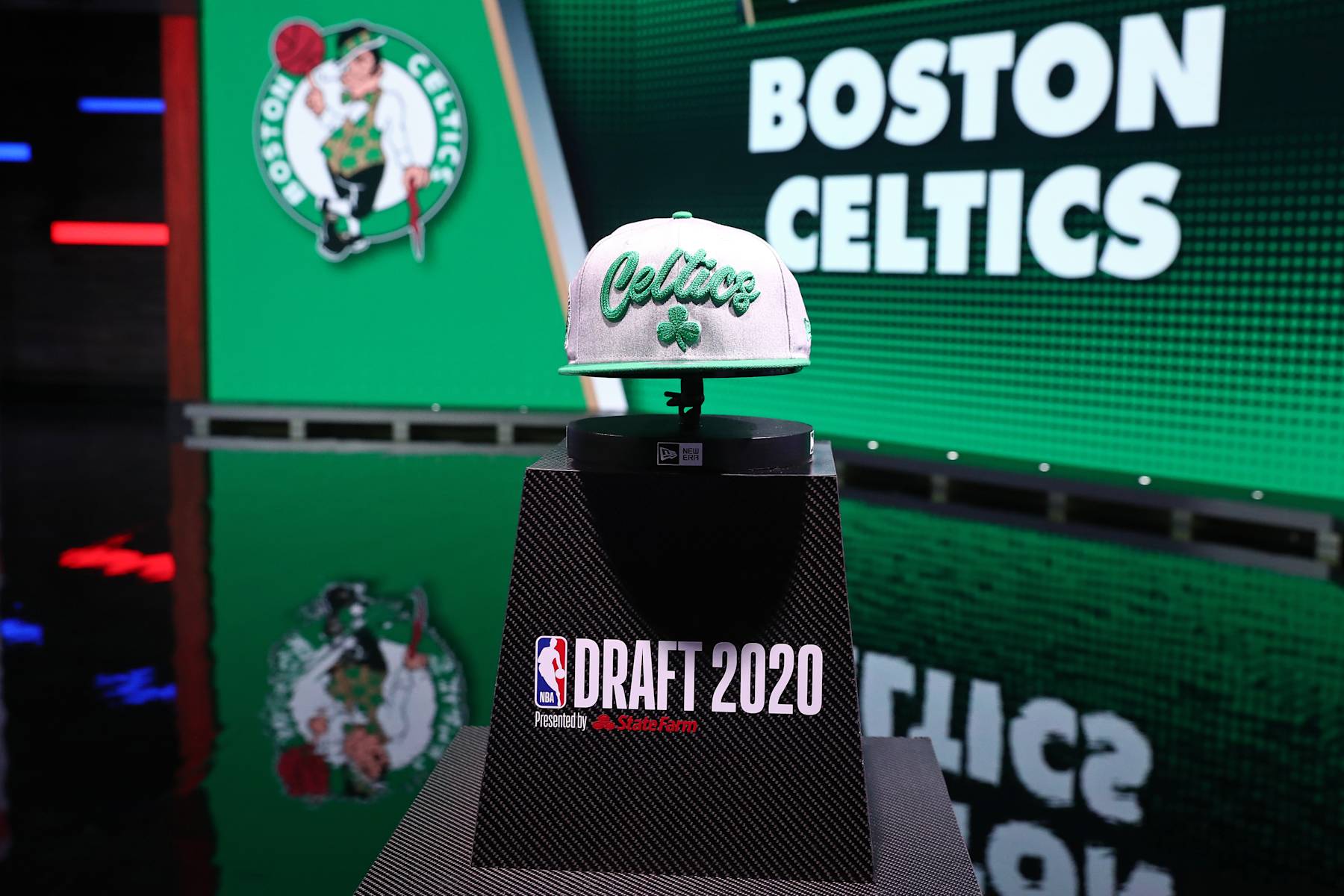
Nathaniel S. Butler/NBAE via Getty Images
Every Boston Celtics player ticketed for a rotation role in 2024-25 is at least 25 years old, which means this group is short on long-term prospects. That’s natural on a defending champ; most title-winners don’t lean too heavily on unseasoned talent.
As you may have heard, though, all of Boston’s in-prime stars and high-end support pieces combine to create a staggering payroll figure.
The Celtics handed out nearly $500 million in new money to Jayson Tatum, Sam Hauser and Derrick White just this past offseason. They’ll operate beyond the punitive and confining second apron for the foreseeable future.
Unless, at some point, they decide to cut costs or swing deals.
We’ve highlighted Boston’s 2027 first-rounder as its X-factor because it’s going to be the top-flight title favorite through at least this season and next. But maybe it will be looking to reorganize by the 2027 draft, when Jrue Holiday will be 37 and veterans such as Al Horford may have aged out of the league.
Because the Celtics won’t be able to aggregate salary or take back more cash than they send out in trades, that 2027 pick could be a key to gaining some measure of flexibility.
Whether as a sweetener to get off money it no longer wants to pay or as an attachment that brings back talent upgrades, that selection could be critical in Boston’s effort to extend this run.
Brooklyn Nets: Noah Clowney
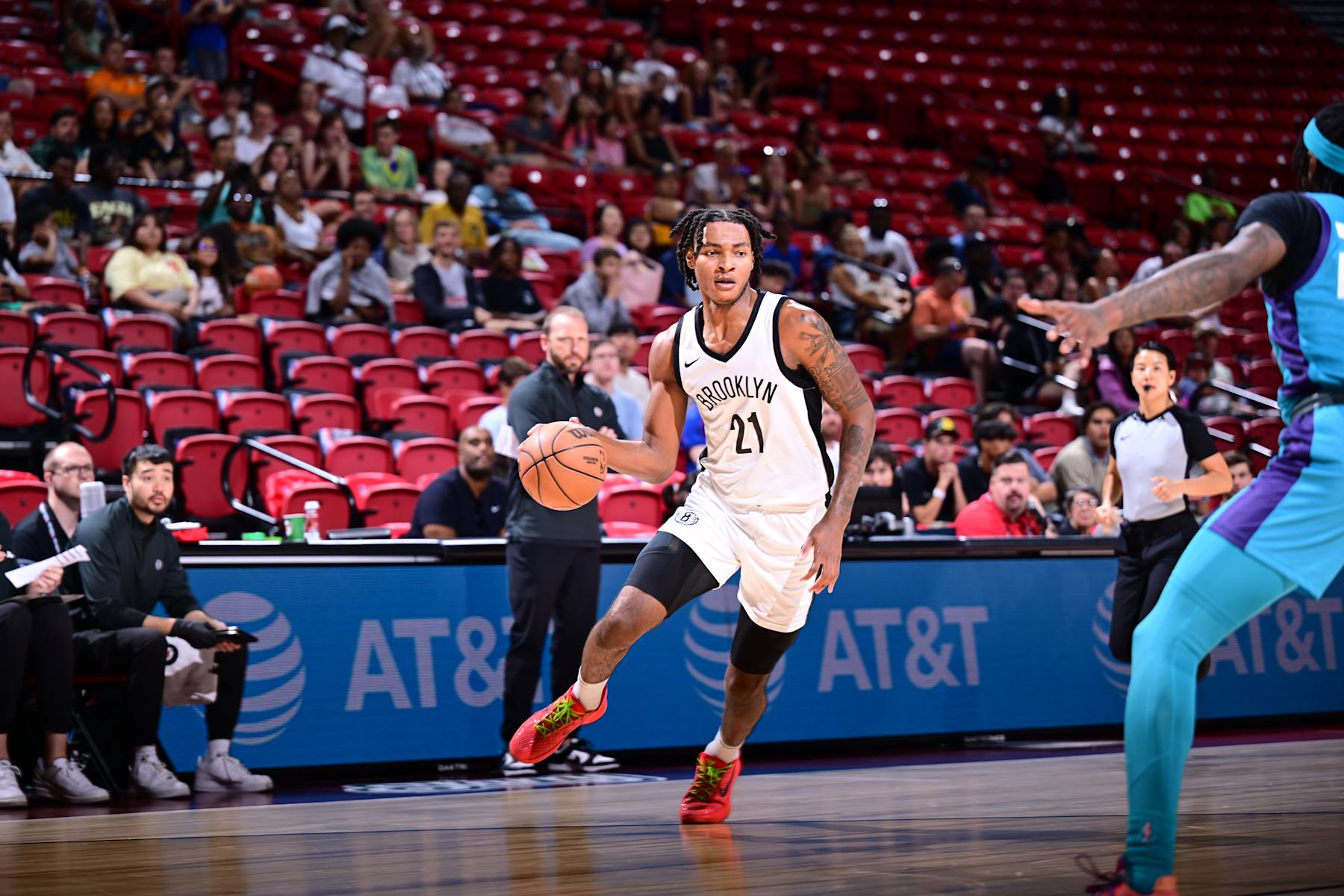
Adam Hagy/NBAE via Getty Images
Noah Clowney isn’t on many people’s radar outside of Brooklyn, as the rookie forward spent much of 2023-24 assigned to the G League.
However, devotees of the Brooklyn Nets got a glimpse of what the 19-year-old could do when he saw more extended playing time late in the year.
And it was quite a sight.
Clowney submitted most of his best work on defense, where he flashed the wingspan and timing that suggests he has elite help-defender chops. His seven blocks in an April 10 win over the Toronto Raptors opened plenty of eyes.
Until he fills out, he probably won’t be stout enough to log significant time as a center, where his 36.4 percent shooting from deep would be immensely valuable. That’s why it’s so encouraging that he also appears capable of checking wings and forwards on the perimeter.
Brooklyn is entering the earliest stages of its rebuild, and Clowney should get every opportunity to broaden his game on both ends in 2024-25. If he picks up where he left off down the stretch last year, he could start to look like a cornerstone.
Charlotte Hornets: Tidjane Salaün
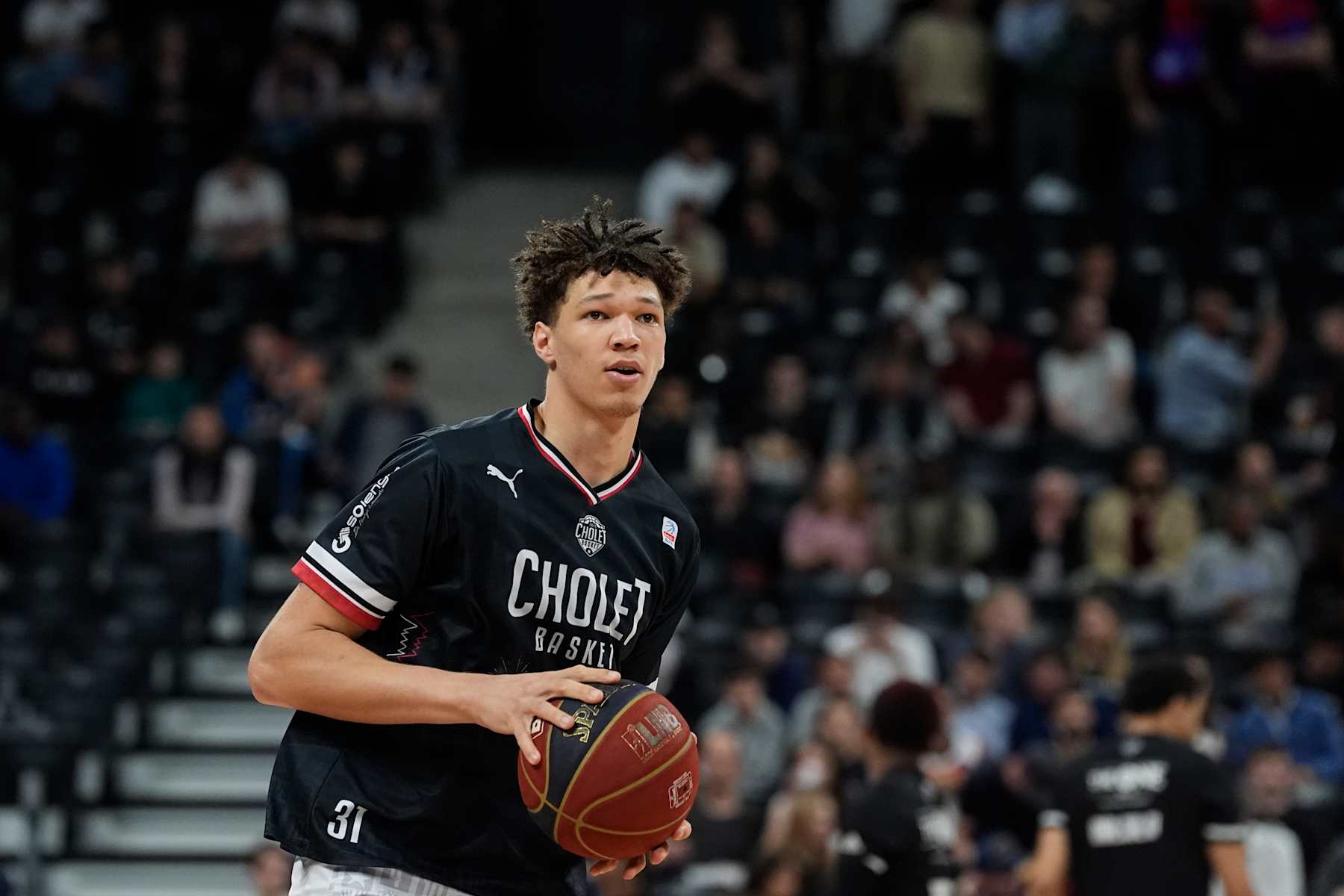
Glenn Gervot/Icon Sportswire via Getty Images
It’s not like Brandon Miller’s future is settled, and even LaMelo Ball comes with some of the upside-downside dichotomy that marks true X-factors. But if we’re looking as far down the road as possible, rookie Tidjane Salaün is the only real choice for the Charlotte Hornets.
Miller showed enough as a rookie to indicate he’s got a quality-starter floor, and Ball has already made an All-Star game. In contrast, Salaün, drafted at the age of 18, is a mystery box.
The measurables—6’10” with a 7’2″ wingspan—are intriguing for a forward, but it’s the Frenchman’s intangibles that might matter most. He’s a high-energy player with an attacking mentality, and Hornets GM Jeff Peterson called him the “ultimate competitor” who “works as hard as anyone.”
If you get a high-revving motor in a 6’10” forward with perimeter skills, it’s hard for things to go sideways too badly.
Obviously, Salaün is a project. He may not even see regular rotation minutes as a rookie. But his tantalizing mix of size, skill and demeanor will figure heavily in Charlotte’s long-term plans.
Chicago Bulls: Josh Giddey
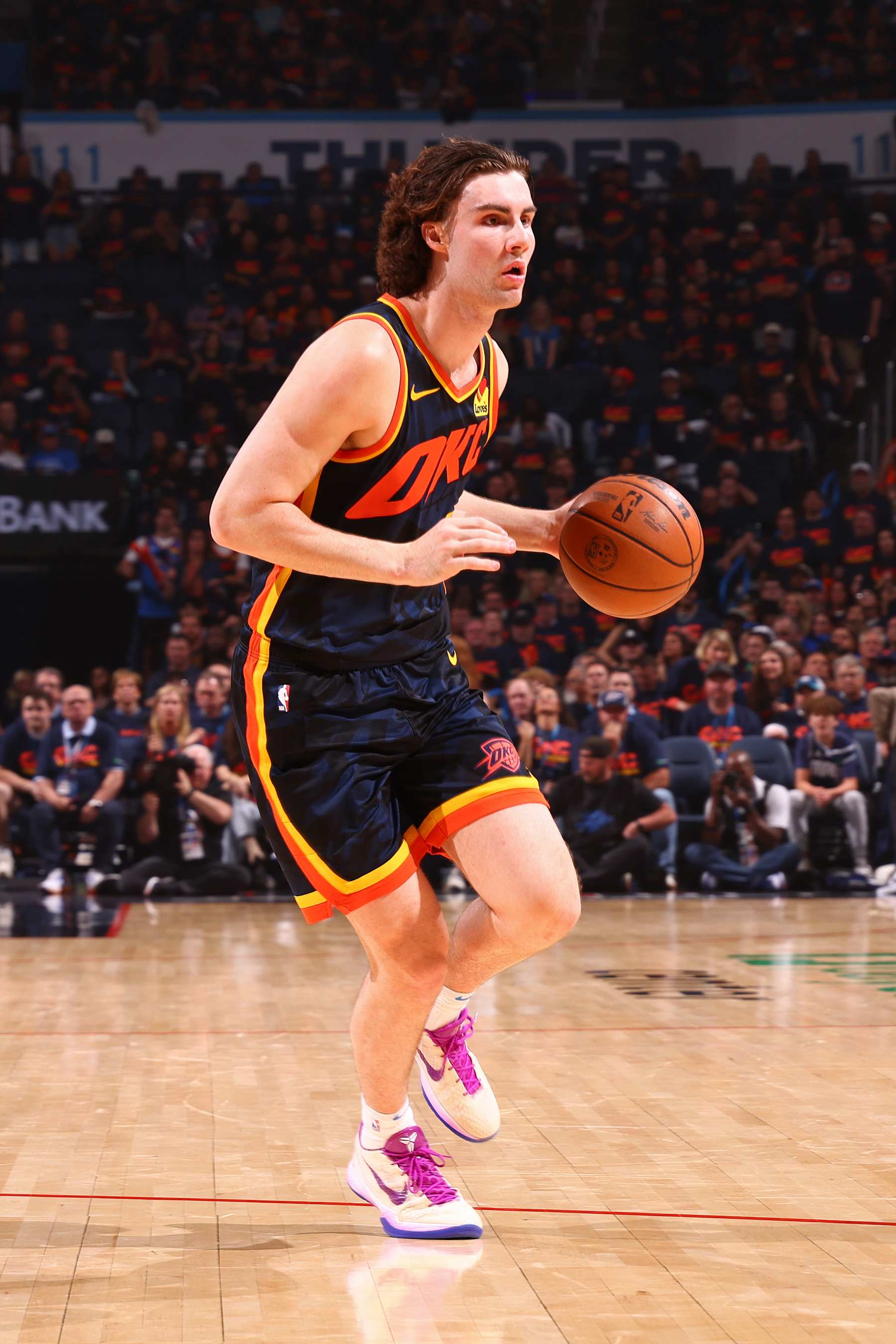
Zach Beeker/NBAE via Getty Images
The Chicago Bulls’ future can’t really begin until its present commitment to overpriced mediocrity changes, which gives Zach LaVine a good case to feature here.
If there’s ever going to be a Matas Buzelis era, it’ll start after LaVine is gone.
Still, we have to go with offseason acquisition Josh Giddey, a player with a wide spectrum of developmental outcomes the Bulls will only get to see after they hand him what’s likely to be a hefty contract extension.
Chicago hopes the 21-year-old is a level-raising facilitator and offensive initiator with a floor of, say, a larger Ricky Rubio. With great positional size and legitimate year-over-year growth as a three-point shooter (career-high 33.7 percent last year), the stat-stuffing Giddey has a lot going for him.
It’s easy to get hung up on the seeming folly of Chicago prioritizing him over future picks in the Alex Caruso trade, but Giddey has upside that he might hit in his first full-time on-ball role. Of course, it’s also possible his poor defense and iffy shooting will result in him flopping as a front-line rotation piece. Hence the X-factor status.
Cleveland Cavaliers: Evan Mobley
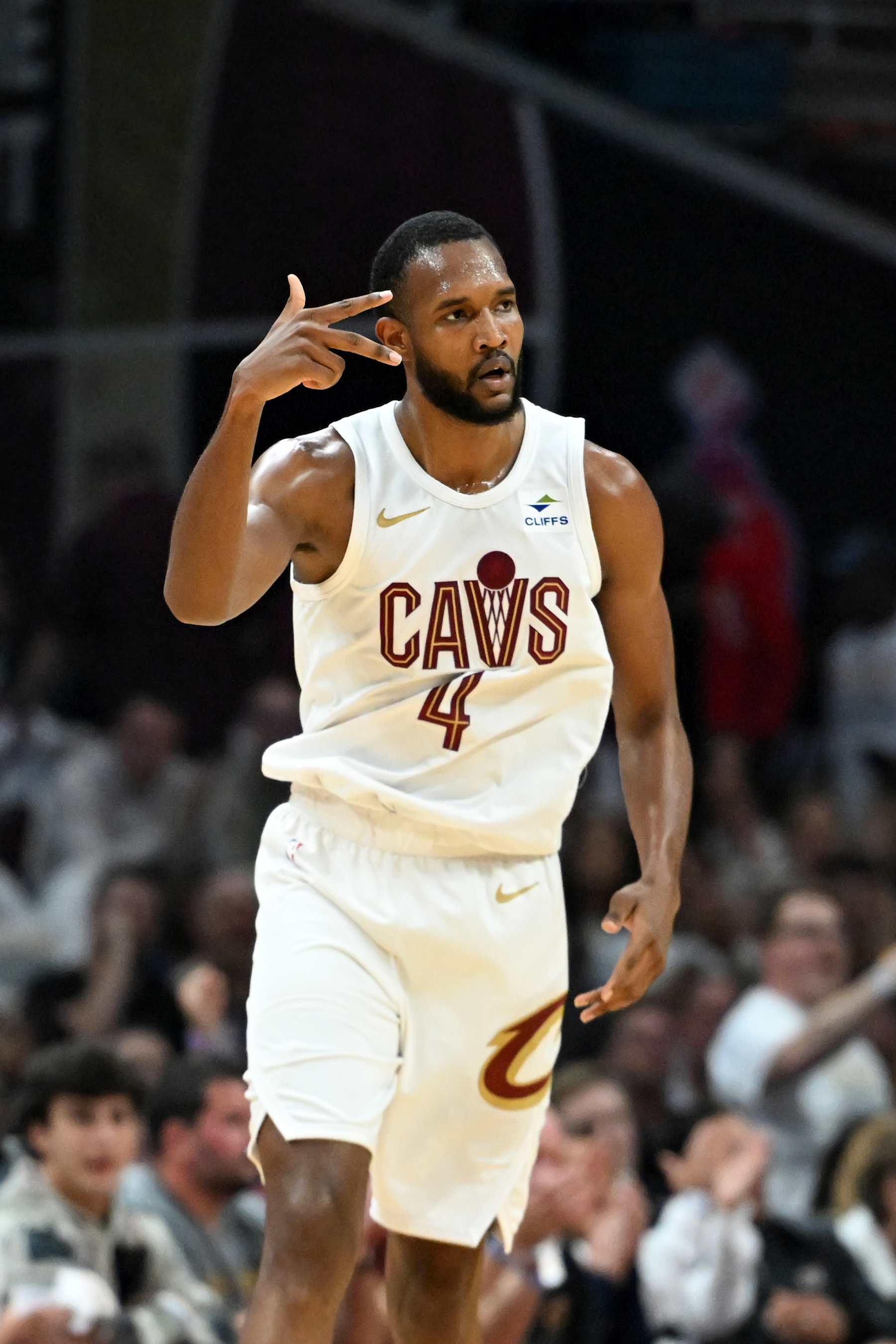
Nick Cammett/Getty Images
Evan Mobley already got his four-year rookie-scale max extension from the Cleveland Cavaliers, an indication that even if he doesn’t quite reach the elite level many suspected was possible, his team still believes he’s worth keeping around at a premium.
The 23-year-old finished third in Defensive Player of the Year voting two seasons ago and has grown into a highly efficient (62.6 percent true shooting in 2023-24), low-usage (20.6 percent) offensive contributor. That’s a valuable player, but he isn’t above Donovan Mitchell on the Cavs’ org chart.
If that changes, Cleveland will ascend to a new tier in the league’s hierarchy.
Mobley has shown glimpses of offensive capability, bumping his assist average from 2.5 per game as a rookie to 2.8 in 2022-23 to 3.2 last year. Continued development as a passing hub and a more aggressive approach overall (let’s get that scoring average out of the mid-teens, please) could result in regular All-Star appearances and deep playoff pushes.
But if the 2021 No. 3 pick settles in at his current level, it’ll be hard to see the Cavaliers climbing out of the second-tier contender class or posing any serious threat to the league’s best teams down the road.
Dallas Mavericks: Dereck Lively II
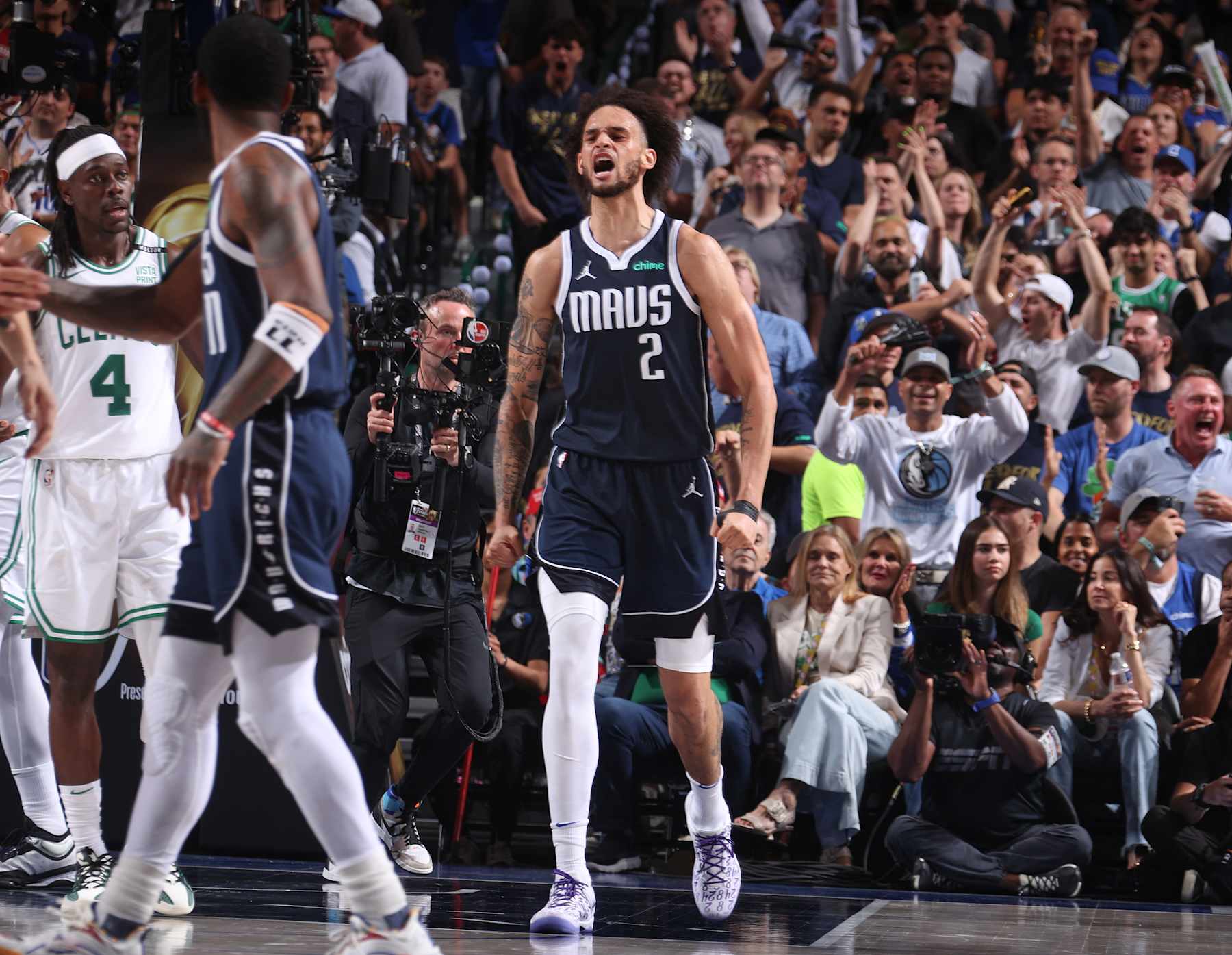
Nathaniel S. Butler/NBAE via Getty Images
Luka Dončić is the one who’ll determine whether the Dallas Mavericks’ 2024 Finals appearance was a one-off or the first of several trips to the NBA’s ultimate stage. But he’s already established such a high level of production that there’s actually not much foreseeable variance in his future.
He’s been and will continue to be an MVP-caliber superstar.
Dereck Lively II’s next several years are harder to project, which makes him the real swing piece in Dallas.
As a 19-year-old rookie, he exceeded expectations across the board by starting 42 games and establishing himself as one of the league’s most efficient interior finishers and game-altering defenders.
Rookies always struggle to keep their heads above water on D, and Lively had his rough moments. Dallas actually allowed 1.6 more points per 100 possessions with him on the floor last year.
But his potential to defend the rim, end possessions on the glass and survive in space on switches was obvious immediately. Those qualities could make him one of the most important defensive weapons in the game.
Not every player turns their rookie flashes into consistent performance. If Lively continues on the trajectory he set as a rookie contributor to a conference champ, the Mavericks will have a defensive and interior presence worthy of the offensive genius Dončić provides.
Denver Nuggets: Christian Braun
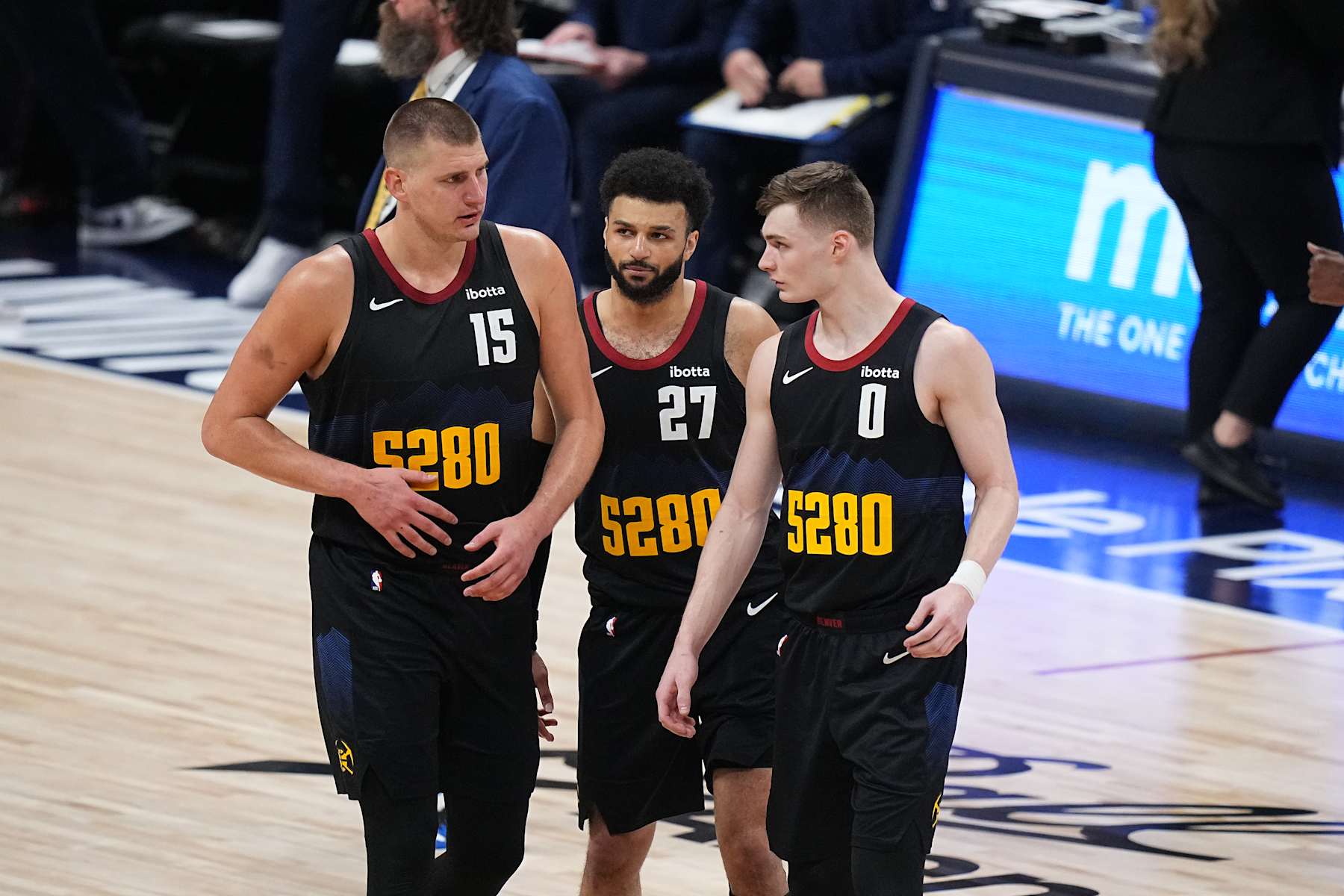
Bart Young/NBAE via Getty Images
Christian Braun has big shoes to fill, which is an odd thing to say about a fifth starter who won’t be expected to provide hefty scoring totals.
The heir apparent to the departed Kentavious Caldwell-Pope, the 23-year-old is set to move into a first unit that has run roughshod over the league for years. His fitness for that role will go a long way toward determining how much longer the Denver Nuggets stick in the top-flight contender class.
Obviously, Braun won’t matter as much as Nikola Jokić or Jamal Murray. Or Aaron Gordon. Or Michael Porter Jr. for that matter. But he’s going to defend the opponent’s best perimeter scorer, be forced to prove he can hit open threes and generally validate Denver’s belief that he belongs on the floor at the end of close playoff games.
There’s an awful lot riding on Braun in 2024-25 and beyond.
Detroit Pistons: Ron Holland
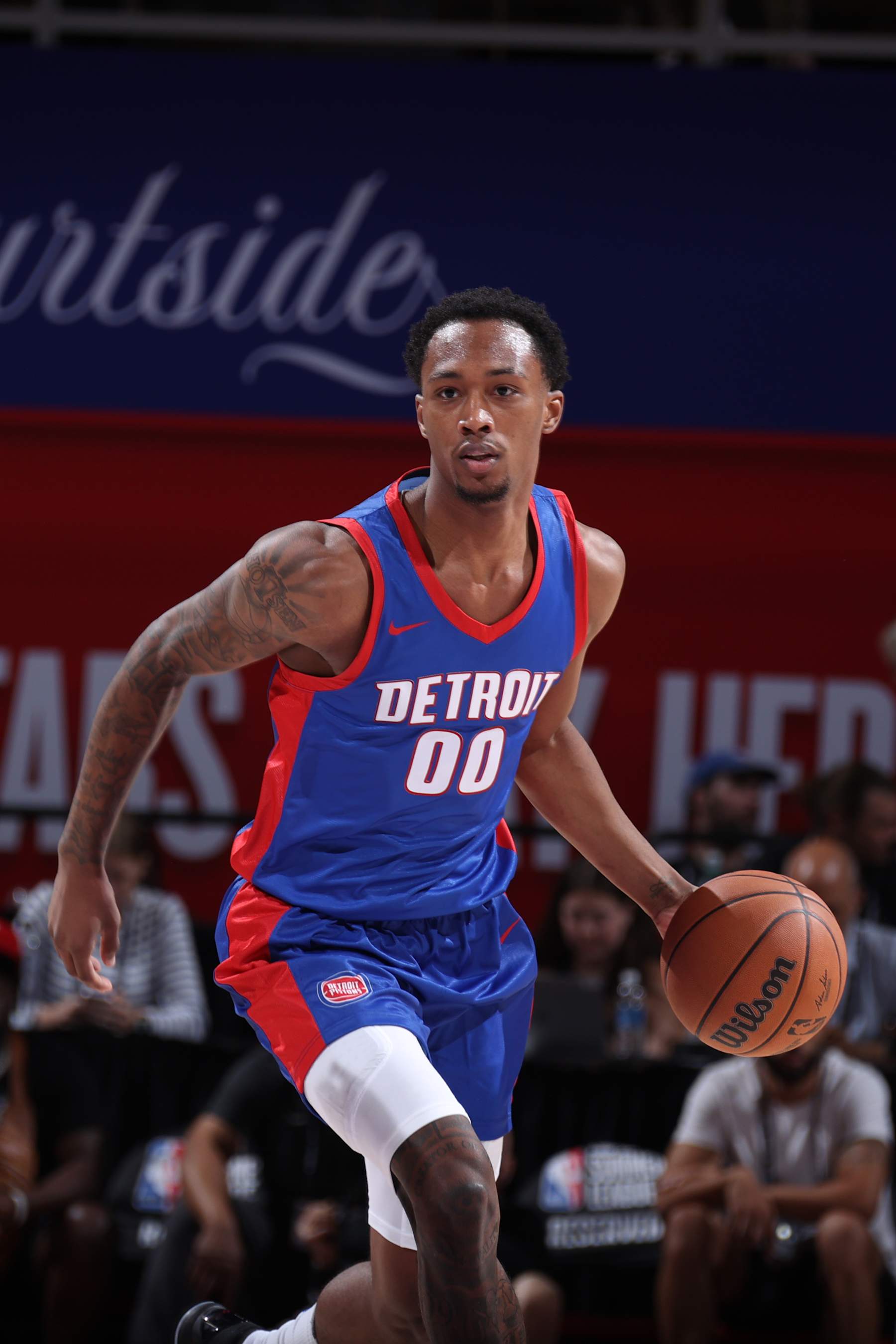
Stephen Gosling/NBAE via Getty Images
When in doubt, go with the youngest, least-proven player on the roster.
For the Detroit Pistons, that’s Ron Holland, the fifth pick in a weak draft whose raw tools and frame suggest there’s superstar big-wing potential lurking within the rookie forward.
Emphasis on potential.
Holland has loads of rough edges, which you’d expect from a player who won’t turn 20 until next offseason. His jumper is oddly hitchy and produces some wildly errant misses, and he’s a good bet to log more turnovers than assists as a rookie. But, at 6’8″ with an explosive, attacking downhill game and the high-revving motor that augurs well for his defensive future, the guy who began 2023-24 at the top of many mock drafts also oozes upside.
The Pistons are long on X-factors. Ausar Thompson and Jalen Duren are both still young enough to make All-Star ceilings and mid-rotation floors realistic.
Holland’s spectrum of possible outcomes is even wider, to the point that it wouldn’t register as a total shock if we have to start talking about him as Cade Cunningham’s best long-term running mate at some point.
Golden State Warriors: Jonathan Kuminga
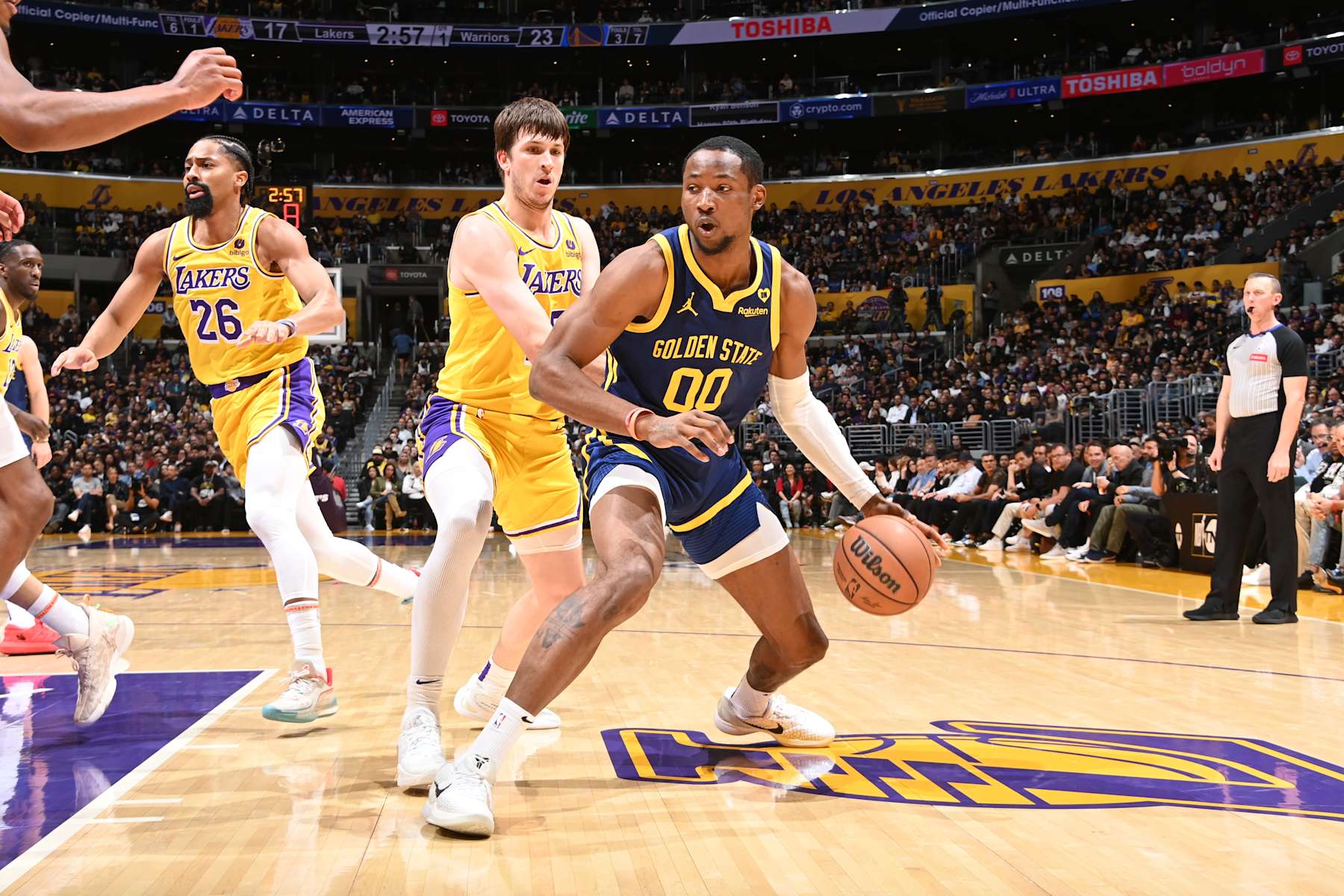
Andrew D. Bernstein/NBAE via Getty Images
Forget five years down the road; Jonathan Kuminga is actually an X-factor for the Golden State Warriors right now.
A team that desperately needs a second star to support Stephen Curry as he moves into his late 30s currently features no greater hope for filling that role than the 21-year-old forward who’s tantalized fans with jaw-dropping athleticism and overhwhelming physical tools from the moment he made his Summer League debut in 2021.
Kuminga finally got himself ensconced as a starter partway through 2023-24, and his per-minute stats warrant a moment of notice.
In 74 games last season, he averaged 21.9 points, 6.6 rebounds and 3.0 assists per 36 minutes while shooting 52.9 percent from the field. No one else in NBA history has ever posted those per-36 figures across a sample that large at such a young age.
Is that the start of a superstar trajectory, or a misleading sample that won’t hold up in a larger role?
Golden State’s present and post-Curry future both hinge on the answer.
Houston Rockets: Cam Whitmore

Stephen Gosling/NBAE via Getty Images
It’s already clear Cam Whitmore should have gone higher than 20th in the 2023 draft. The 6’7″ forward spent the entirety of his rookie season as a 19-year-old and averaged an unbelievable 12.3 points in only 18.7 minutes per game.
As a service to the math-averse crowd out there, that’s 23.7 points per 36 minutes—and he put up that figure on a 56.1 true shooting percentage that fell just a hair below league average.
Scoring chops alone aren’t enough to make Whitmore a star.
Pick any random game of his after he jumped from the G League to the Houston Rockets’ rotation, and you’ll get the good with the bad. For every deft step-through in transition and easy-release three, there are defensive non-competes and telegraphed cross-court passes begging to be picked off. That sort of up-and-down performance should be the expectation for a rookie, but it felt particularly illustrative of Whitmore’s possible futures.
If he never rounds out the rest of his game, improves his shot selection and commits to defending, Whitmore could wind up with the disappointing “empty buckets” label. If he becomes a more complete player and continues to flash the scoring instincts of an alpha, he could quickly climb to the top of a long list of potential future stars on the Rockets’ roster.
Indiana Pacers: Bennedict Mathurin
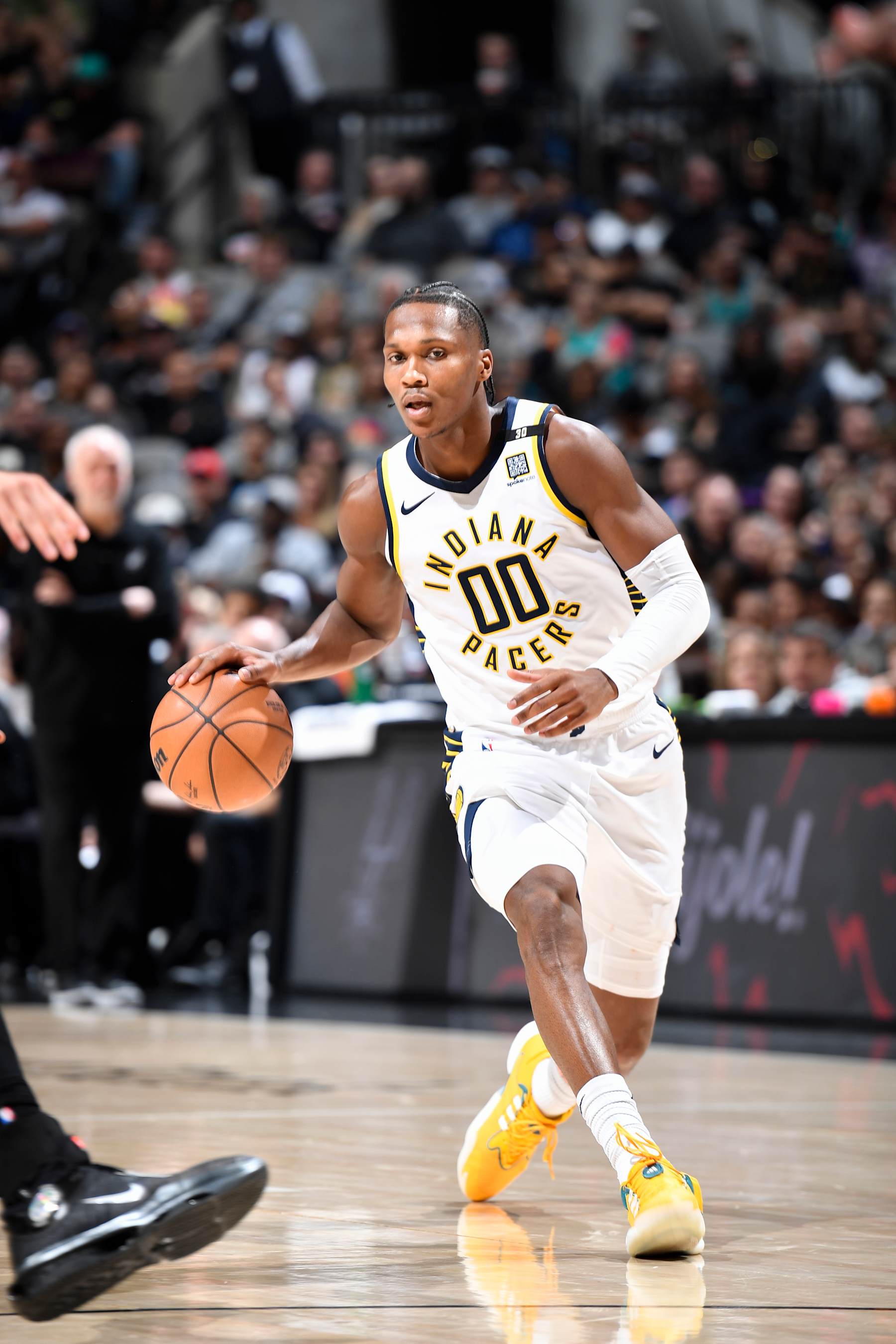
Logan Riely/NBAE via Getty Images
A pessimist could argue that the Indiana Pacers are making it pretty hard for Bennedict Mathurin to even warrant an X-factor label.
By extending Andrew Nembhard and TJ McConnell, Indy committed to two players who’ll eat into the offensive-minded guard’s minutes, potentially removing breakout upside ahead of his age-22 season.
With superstar Tyrese Haliburton allotted as much playing time as he can handle and incoming sophomore Ben Sheppard actually earning some playoff minutes in 2023, the Pacers’ backcourt rotation is uncomfortably crowded.
Mathurin’s high-volume scoring isn’t something any of his role-playing competitors can replicate, but it’s also not really something Indiana, which finished second in offensive efficiency last year, needs.
Can the Pacers find enough minutes for Mathurin to put up buckets in bunches or, even better, prove he can do more than just score? If so, they could look to move Nembhard and/or McConnell for more size on the wing, potentially balancing out the roster as Mathurin evolves into a high-end starter.
If not, the Arizona product will profile as trade bait either this season or next, effectively rendering him a miss at No. 6 in the 2022 draft.
LA Clippers: Kawhi Leonard
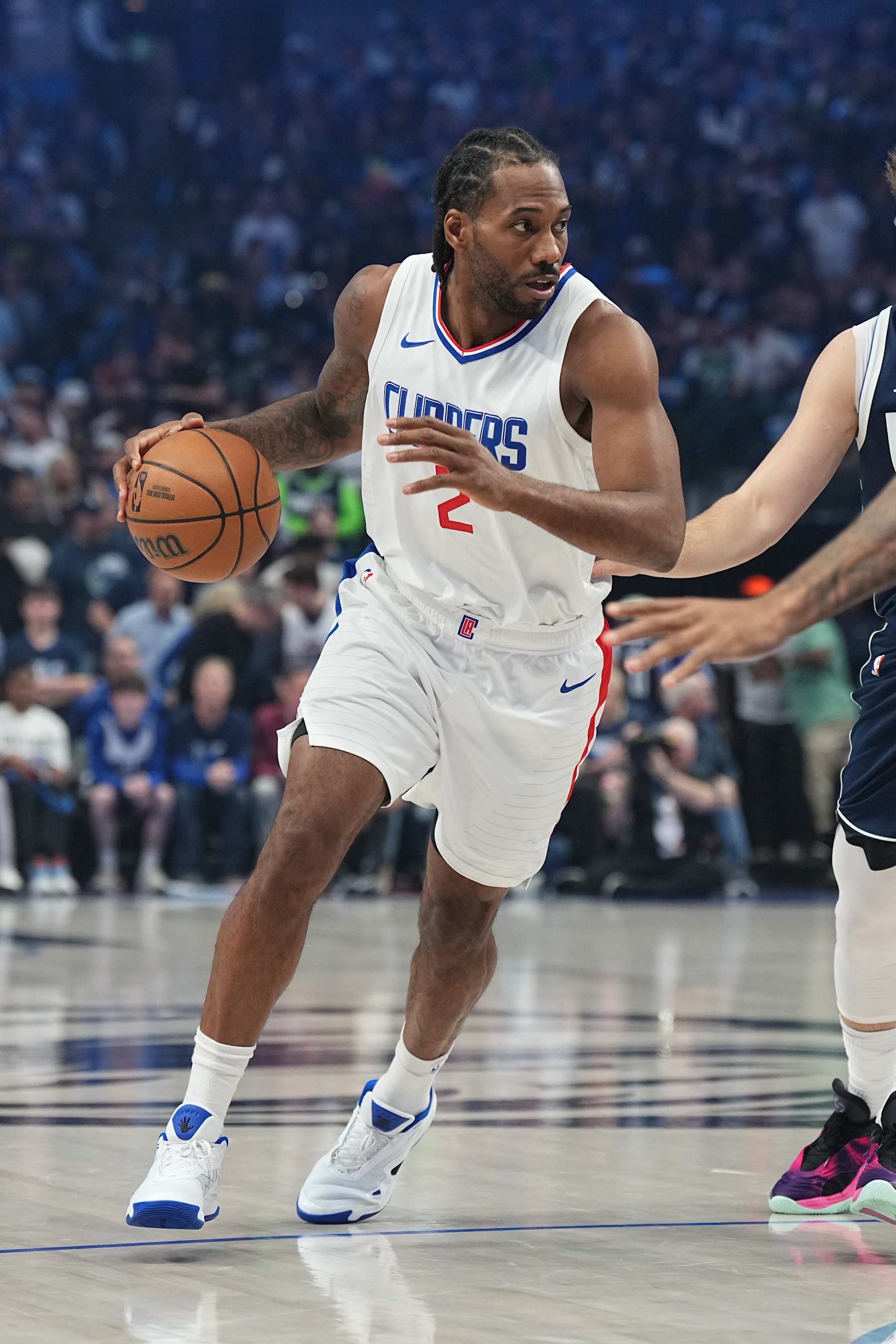
Glenn James/NBAE via Getty Images
We have to get unconventional for the LA Clippers, who don’t have any prospects of note and don’t control their own first-round picks until 2030.
Few teams are more firmly anchored to the present than this one, and even fewer have such limited means to reorient the operation toward the future.
One of the only ways for L.A. to reshape itself is to trade its most valuable commodity, Kawhi Leonard.
That doesn’t seem to be on the table any time soon, as the Clips are moving into a new arena this season and seem committed to fielding a competitive team as they do so. Plus, the six-time All-Star inked a three-year extension just last season.
Then again, adding years to the 33-year-old’s deal might make him a more appealing acquisition for the right suitor. There’s not much certainty that he will be available night to night, but at least an interested organization would have assurances he’ll be under team control through 2026-27.
The return for Leonard in a hypothetical trade is hard to forecast. His health history and age make him a high-risk, high-reward fit anywhere. But he’s the only way for the Clippers to acquire the kinds of future assets we’ve been discussing for all of these other teams.
Los Angeles Lakers: Max Christie
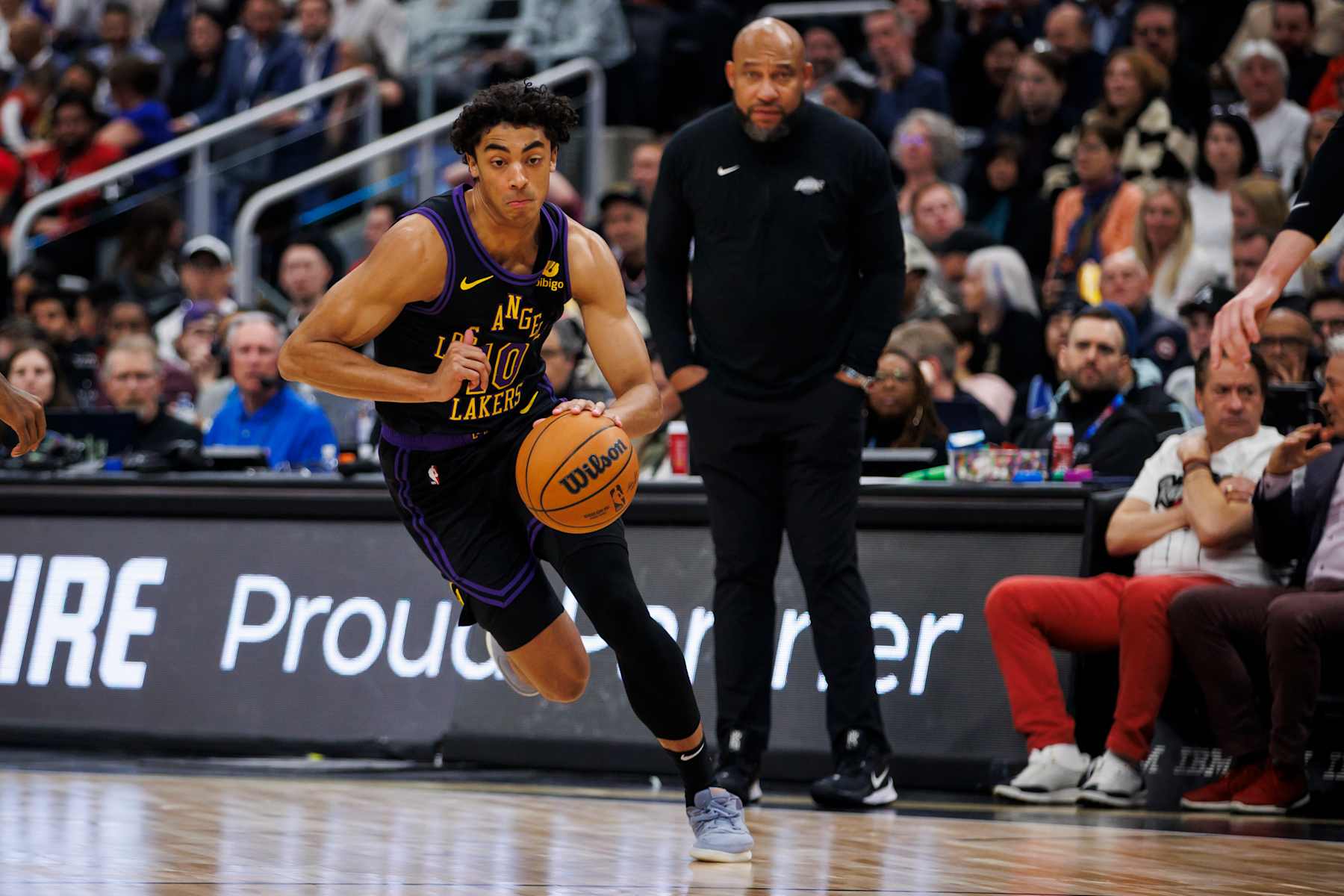
Cole Burston/Getty Images
It would have been easy to run back the logic that made Kawhi Leonard the Clippers’ pick, as the Los Angeles Lakers’ future is similarly anchored to LeBron James. But we’ve at least got a couple of youthful candidates to consider here.
Among a core of unknowns that includes Dalton Knecht and Bronny James, the recently re-signed Max Christie stands out.
His four-year, $32 million deal was a surprise in the wake of a sophomore season that included averages of just 4.2 points and 2.1 rebounds per game.
Even at 21 and boasting good size at 6’6″ for a shooting guard, his stats screamed “minimum salary.” Yet here he is under contract with the Lakers through 2027-28, longer than James and anyone else but Knecht, who just inked his rookie deal.
Christie could develop into a rotation-caliber weapon who adds depth to a win-now Lakers team, but that wouldn’t really alter any of its long-term plans—insofar as it has any.
More likely, Christie could play well enough to be a key piece in a trade that lands a star, ideally one who would impact Los Angeles over the latter half of this decade.
That’s a roundabout route to finding a long-term X-factor, but we got there.
Memphis Grizzlies: Zach Edey

David Dow/NBAE via Getty Images
The Memphis Grizzlies are a ready-to-roll 50-win outfit and should remain that way for the next several seasons…as long as Zach Edey solves their center problem.
Most teams who figure to be as good as Memphis don’t just toss a rookie into the starting lineup and assume it’ll all work out. But the Grizzlies have proof of concept that a player somewhat like Edey, a hulking presence seemingly carved out of stone, works well for them in the center role.
Steven Adams screened, rebounded and threw his weight around to great effect in Memphis for a couple of years. Edey, a two-time AP National Player of the Year at Purdue, seems equipped to do the same.
The Grizzlies are asking a lot of the 22-year-old in one sense, in that they’re throwing him into a pressurized role with real stakes. But in another, they only need him to play to his strengths.
If he can use his size and physicality to finish as a roll man, set picks and control the paint, he’ll be a major part of a potential top-four team in the West for years to come. If he struggles to survive in space on defense or can’t keep up with the speed of the game, the Grizzlies may not be able to join the West’s elite.
Miami Heat: Kel’el Ware
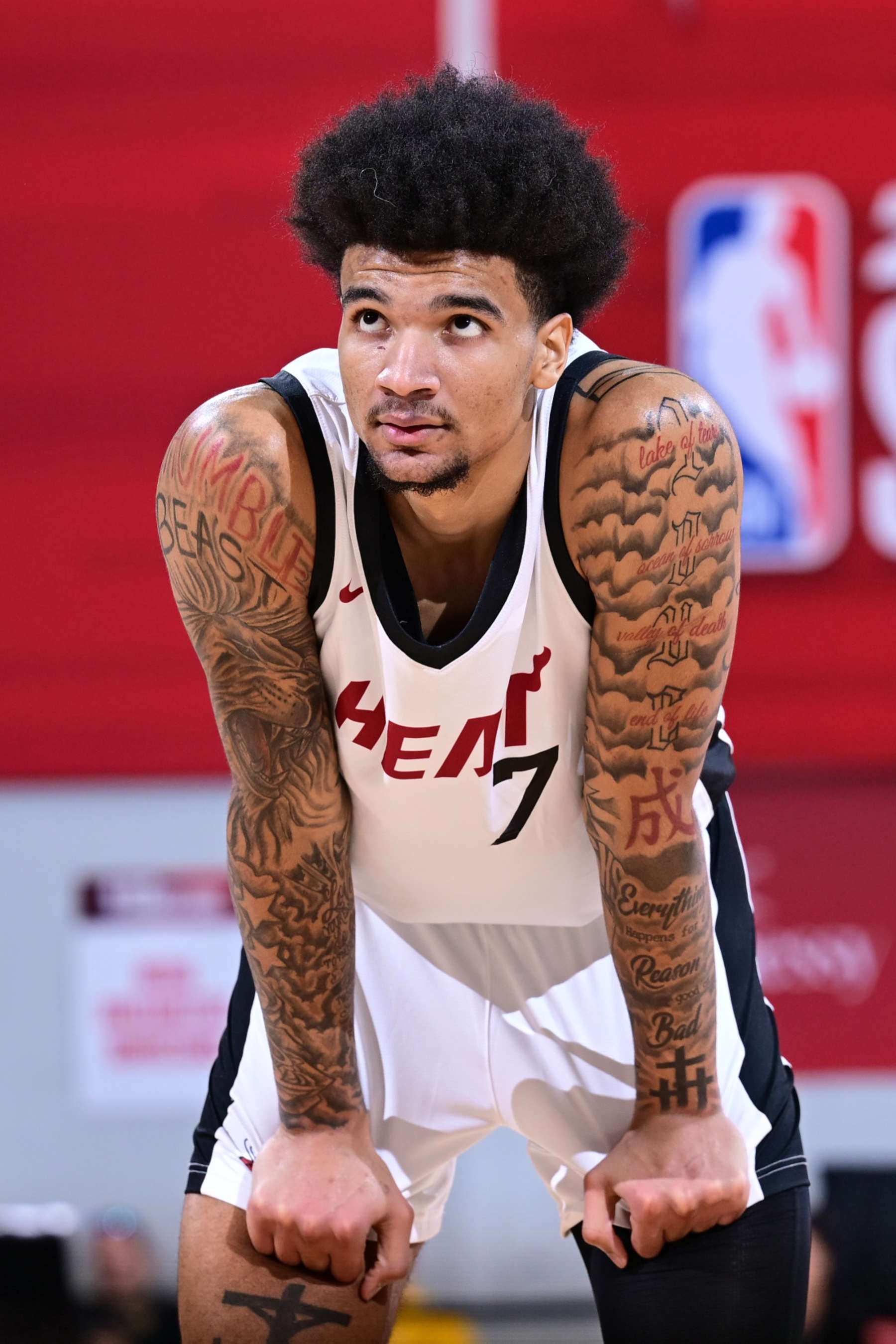
Adam Hagy/NBAE via Getty Images
Kel’el Ware secured first-team All-Summer League honors by averaging 17.4 points, 8.0 rebounds and 1.6 blocks per game on a dunk-heavy shot diet that yielded a 66.7 effective field-goal percentage.
At 20, the high-energy big man joins Nikola Jović on a very short list of up-and-coming Miami Heat prospects. While the Serb enjoyed second-year growth in 2023-24 that saw him average 7.7 points, 4.2 rebounds and 2.0 assists on a 45/2/39.9/70.2 shooting split, it’s Ware who actually warranted some “wait, could he start next to Bam Adebayo?” consideration.
Ware thrived in transition and played with downhill aggression in half-court situations during Summer League. His ability to space the floor at the NBA level remains uncertain, but a 42.5 percent hit rate on threes at Indiana last season intrigues.
Miami would do well to get the Indiana product’s length, athleticism and size on the floor for defensive purposes, but those gains will only be worthwhile if the rookie also offers some stretch and scoring.
A Heat team that has struggled on offense over the last two years could unlock new dimensions if Ware proves capable of contributing on both ends.
Milwaukee Bucks: AJ Johnson

Stephen Gosling/NBAE via Getty Images
Any team with Giannis Antetokounmpo has the ability to overwhelm opponents with physicality, but the veteran Milwaukee Bucks aren’t exactly known for their dynamic athleticism.
That’s why No. 23 pick AJ Johnson stands out as such a potential change-of-pace piece on their roster.
Still only 19 after a pro season with the Illawarra Hawks of the Australian National Basketball League, the rail-thin 6’5″ guard jets up and down the floor and attacks the rim with slithery drives. Though he’s not going to take over Damian Lillard’s spot at point guard any time soon, it’s possible he could carve out minutes by providing the speed and energy most of the Bucks’ other backcourt rotation pieces can’t.
The Bucks might have erred by picking Johnson, whose youth and rough edges probably mean he’s not ready to consistently help in their win-now effort. But as a longer-term play, the exciting guard has a lot going for him.
Minnesota Timberwolves: Rob Dillingham
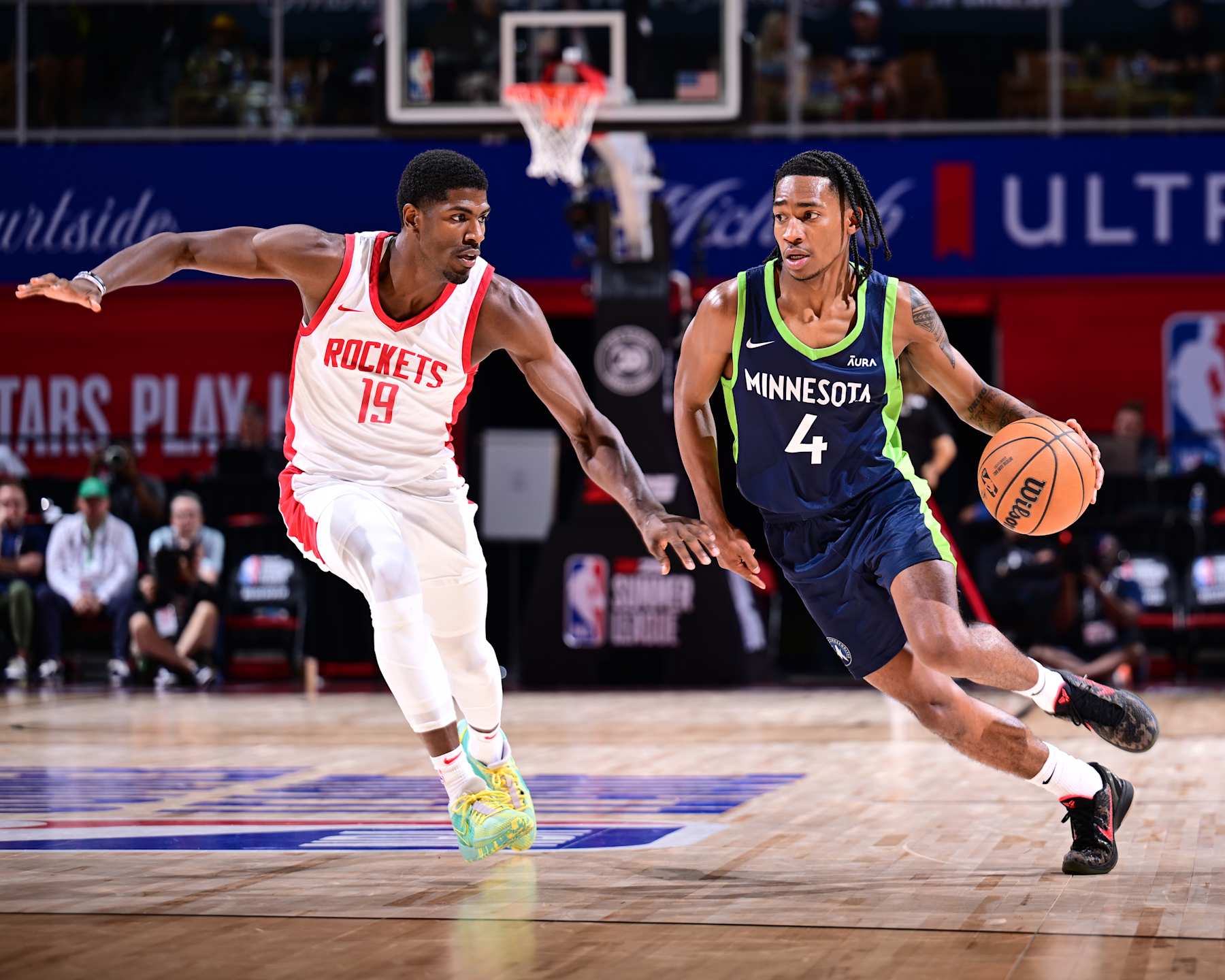
Adam Hagy/NBAE via Getty Images
We’ve had to stretch a little with other potential contenders because those types of teams don’t tend to feature many young and unproven players. Rob Dillingham is exactly that kind of talent, making the Minnesota Timberwolves’ guard an easy pick here.
The Wolves gave up a 2030 first-round swap and a 2031 first-round pick to get the No. 8 selection that became Dillingham, and they figure to slot him in at backup point guard immediately.
That role will ask a lot of the Kentucky product who averaged 15.2 points and shot 44.4 percent from deep in college. His ability to handle the pressure could determine whether Minnesota advances deeper in this year’s playoffs than last.
The Wolves’ willingness to spend the last of their draft capital on Dillingham also indicates they believe he’s well suited to playing alongside Anthony Edwards in the post-Mike Conley iteration of their starting backcourt.
Can the 19-year-old adjust to the speed and physicality of the NBA quickly? Can he show enough flashes to validate Minnesota’s bet on his potential down-the-road stardom?
Most rookies don’t get this kind of trial-by-fire test right away. If Dillingham passes it, the Wolves will feel a lot better about their prospects a half-decade from now.
New Orleans Pelicans: Jordan Hawkins
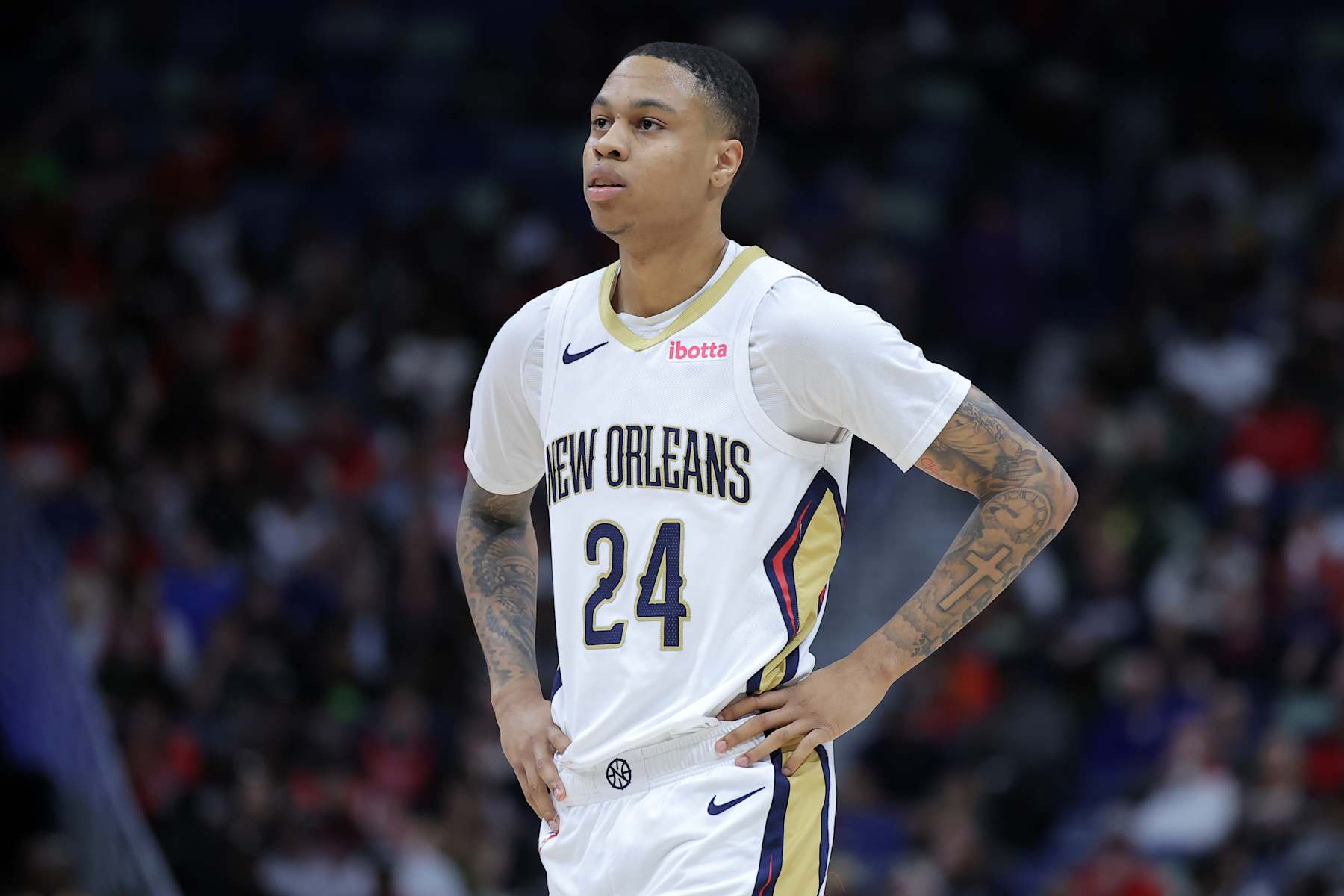
Jonathan Bachman/Getty Images
The New Orleans Pelicans are going to have a top-end offensive engine in Zion Williamson for as long as he’s healthy, but his rumbles into the lane could become truly unstoppable if Jordan Hawkins delivers on his promise as a shooter.
During his rookie year, the 22-year-old was occasionally part of actions as a ghost-screener for Williamson, forcing defenses to choose between devoting extra attention to one or the other.
If Hawkins is dangerous enough from the perimeter to make sets like those staples, New Orleans will strain defenses to their breaking points.
The UConn product shot 36.6 percent from deep last season, getting up a healthy 9.2 long-range tries per 36 minutes. Though his greatest value may come as a movement shooter who bends defenses by flying off screens, it’s still encouraging that he knocked down triples at an automatic 41.2 percent clip when left wide open.
If Hawkins can ramp up his volume and efficiency, and if the Pels can harness his gravity, this offense will be a handful for years to come.
New York Knicks: Tyler Kolek
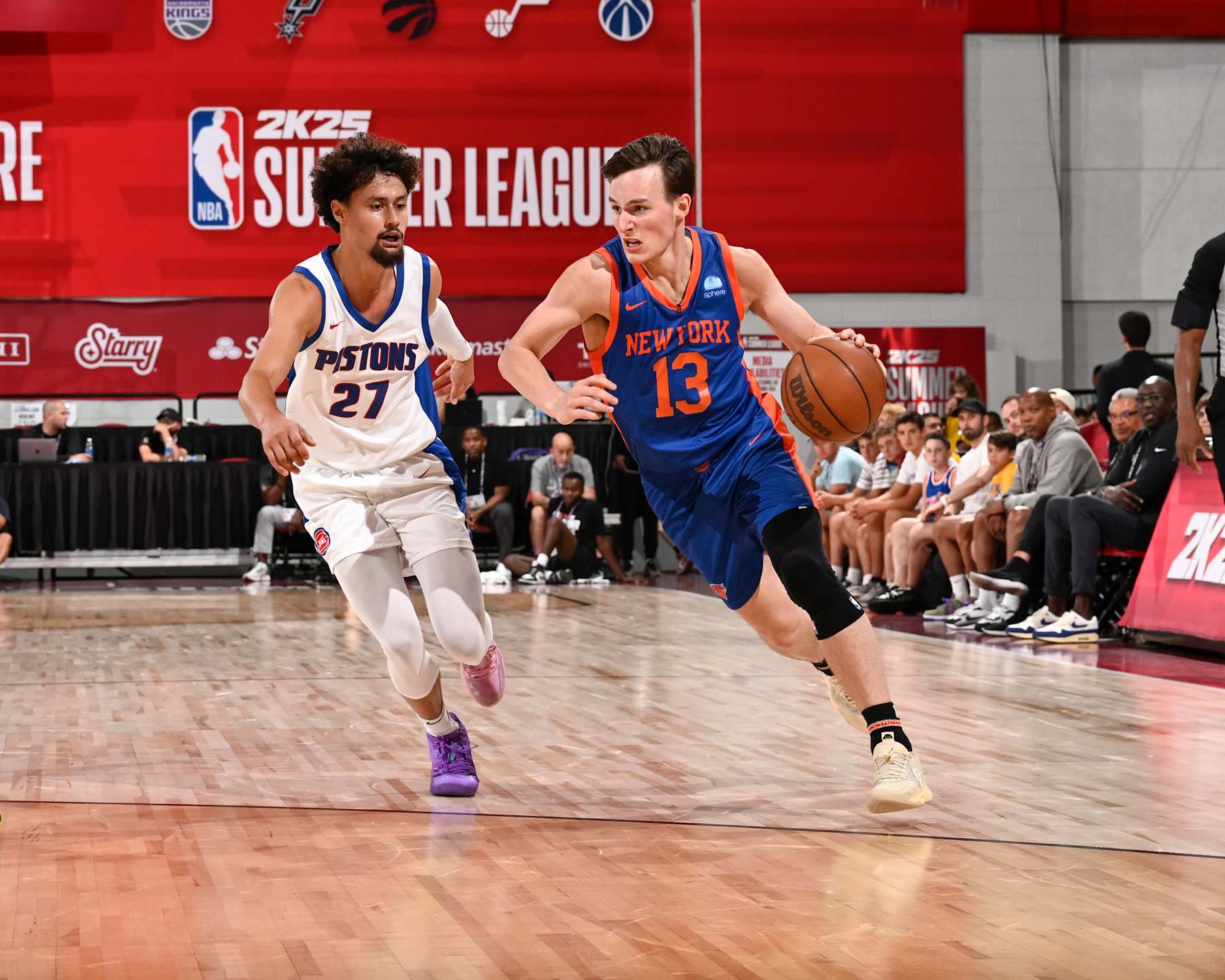
David Dow/NBAE via Getty Images
The New York Knicks traded a trio of future second-rounders to secure the No. 34 pick in the 2024 draft. Their selection, point guard Tyler Kolek of Marquette, is one of the few unproven players on the roster with a shot at rotation duties.
That makes him the long-term X-factor by default.
The 23-year-old looked like the backup point guard until the Knicks signed veteran Cam Payne in July. That said, the four-year deal New York handed the second-rounder is a good indicator of its confidence in his ability to eventually (or maybe immediately) seize that job. No second-rounder in NBA history has ever gotten more guaranteed money than the $6.6 million Kolek secured.
Payne may only be around as short-term insurance.
Assuming Kolek does emerge with that second-unit gig at some point, his importance will exceed that of most rookies. Jalen Brunson is vital to the Knicks’ offensive success, so any time he misses for rest or injury will put immense pressure on his fill-in.
Oklahoma City Thunder: Jalen Williams
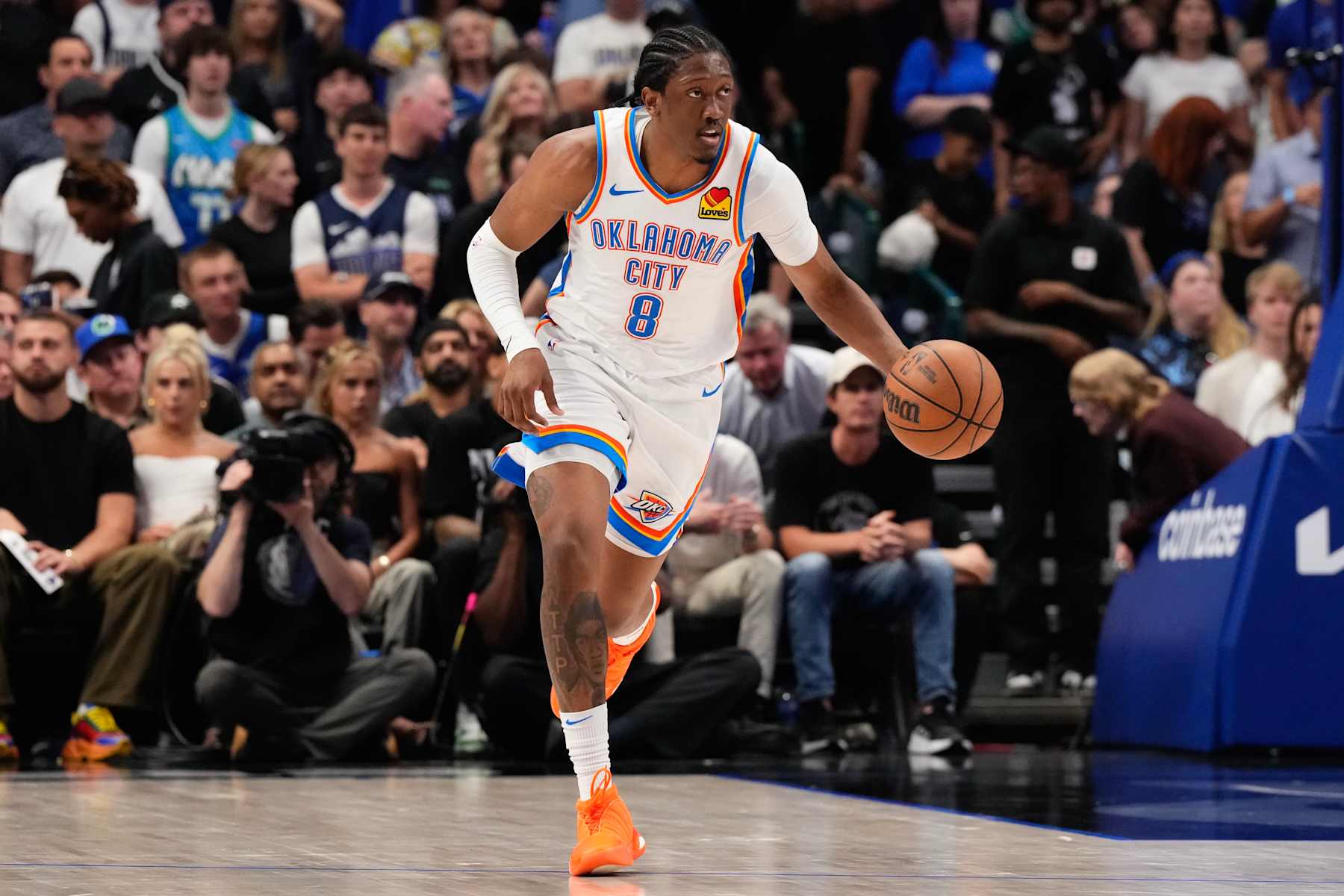
Sam Hodde/Getty Images
Are the Oklahoma City Thunder a one-star operation that can be stymied by devoting maximum defensive resources to stopping Shai Gilgeous-Alexander? Or are they a multi-headed monster with too many dangerous methods of attack to be slowed down by fixating on one threat?
The answer may depend on Jalen Williams’ next developmental step.
The 2022 No. 12 pick shone as a second-year player last season, averaging 19.1 points, 4.5 assists and 4.0 rebounds while posting a sterling 62.1 true shooting percentage. His inability to consistently lead the offense in key playoff moments should have been expected from a late-blooming 22-year-old, but his growth over two seasons was so profound that it almost seemed disappointing.
Ahead of his third year, J-Dub is one of the key swing players in the league. If he has another level of growth ahead, Williams will become a regular All-NBA consideration and give OKC a second superstar—one worthy of nearly the same level of defensive attention as SGA.
Oklahoma City is going to be a consistent contender for years to come if Williams fails to improve. But if he succeeds? Well…it’s reckless to throw the word “dynasty” around so loosely, but here we are.
Orlando Magic: Anthony Black
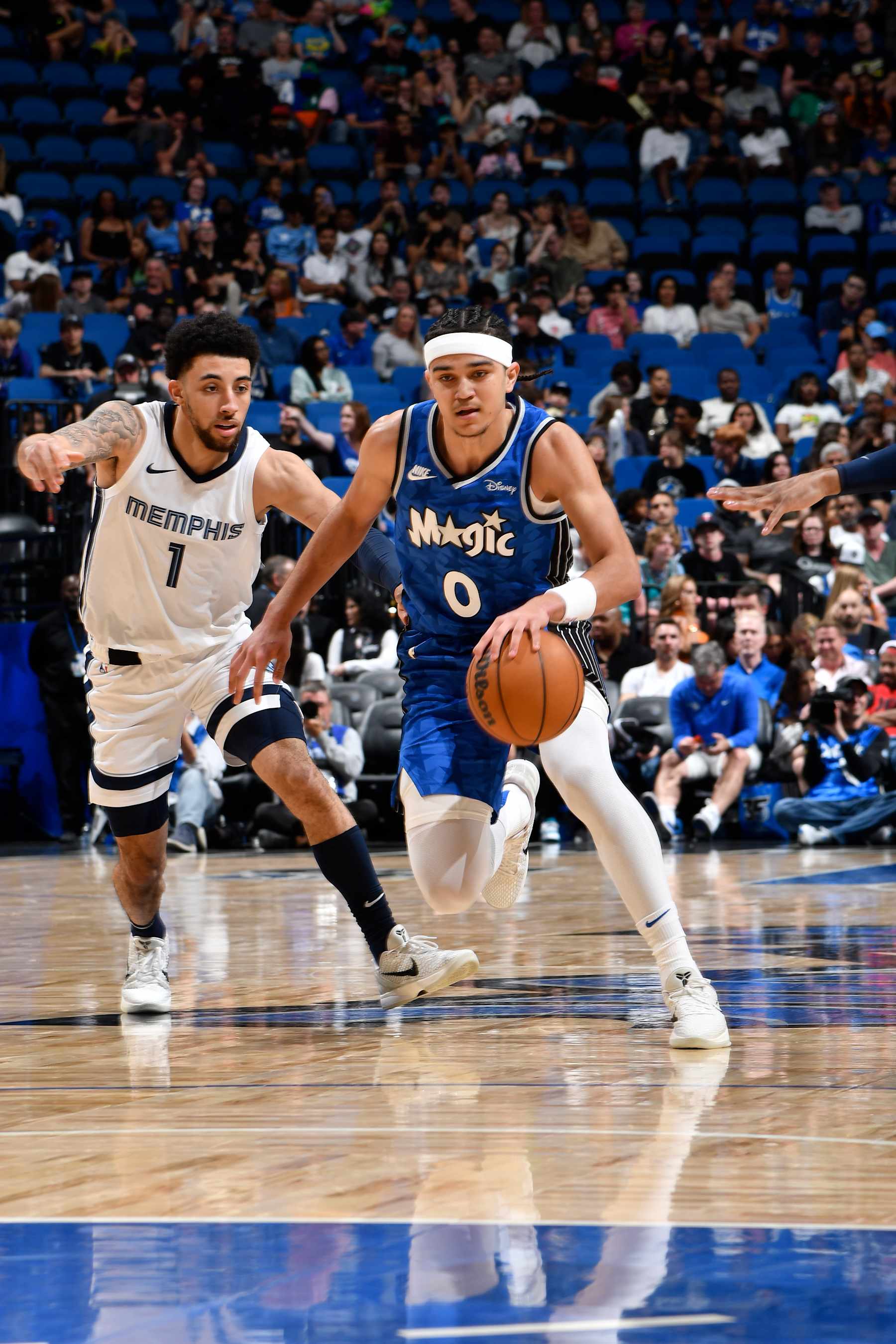
Fernando Medina/NBAE via Getty Images
It’s tempting to go with Jonathan Isaac here, as the Orlando Magic’s low-minute defensive ace comes with unpredictability built into his profile.
While it’s a given that Isaac will offer some of the most disruptive defense in the league when on the floor, injuries and a preservative cap on his playing time make his night-to-night contributions uncertain.
He is also entering his age-27 season with a low likelihood of further skill development.
Anthony Black is different. Still just 20, the 2023 No. 6 pick appeared in 69 mostly uninspiring games as a rookie. Despite his draft pedigree and intriguing 6’7″ size at the point, he has yet to verify he’s even a rotation player. It’s very early in his career, but it seems like he already has a ton to prove.
The Magic will extend Jalen Suggs on a massive deal sooner than later, Paolo Banchero will get maxed next offseason, and Franz Wagner already has his own rookie-scale max locked up. A glut of more experienced guards—Kentavious Caldwell-Pope, Gary Harris, Cole Anthony—means Black is low on the list of spending priorities and the depth chart.
He’ll need to show out as a second-year player to prove the Magic picked the right guy last summer.
Philadelphia 76ers: Jared McCain
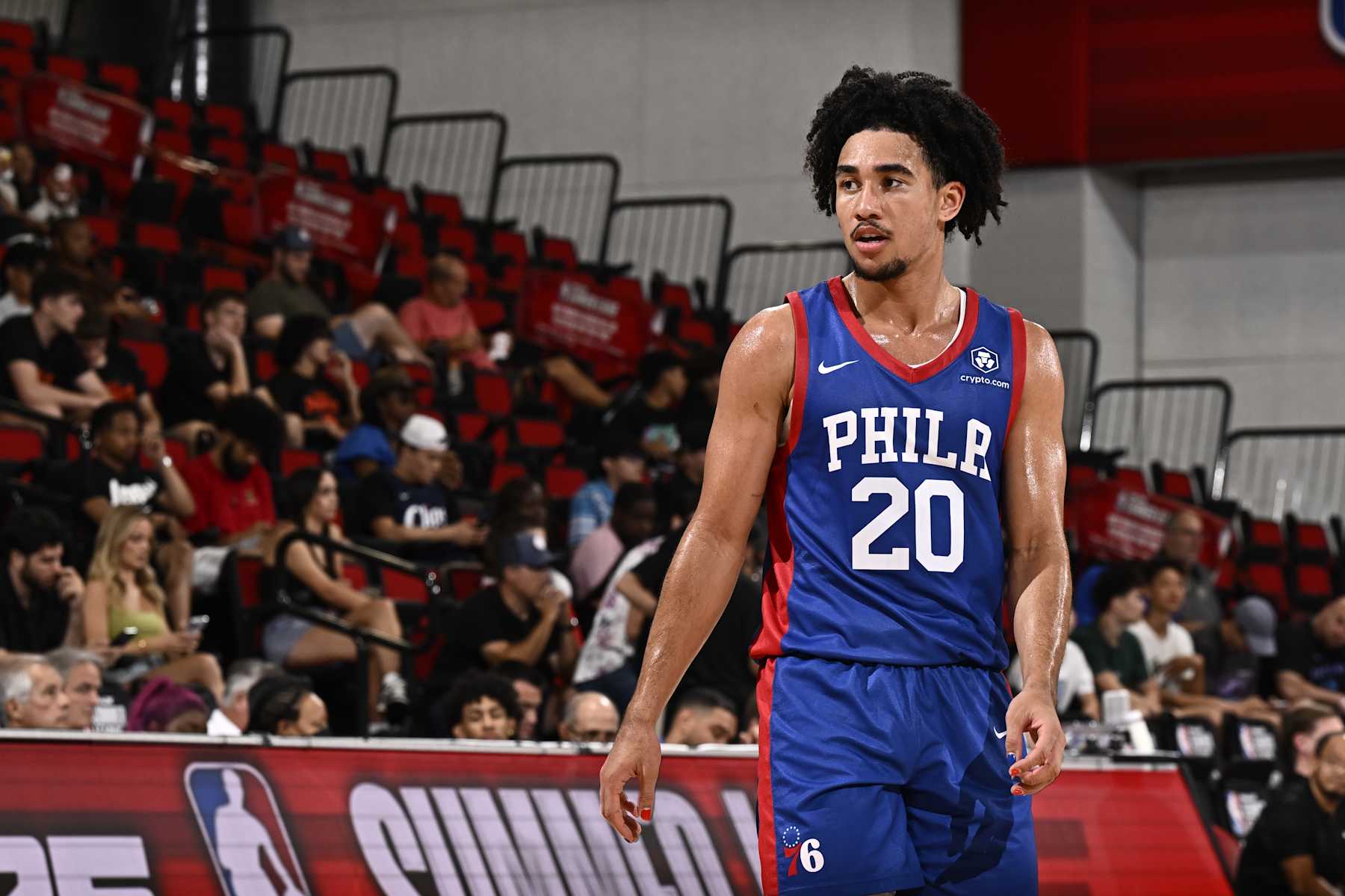
David Dow/NBAE via Getty Images
Lost amid a summer defined by extreme free-agent spending, Jared McCain landed on the Philadelphia 76ers via the draft.
A little undersized as a shooting guard at 6’3″, the 20-year-old comes billed as one of the top shooters in his class. He racked up a pair of 30-point games for Duke in the NCAA tournament and shot 41.4 percent on 5.8 long-range attempts per game for the season.
His shooting seems to be a given. If he can solidify his playmaking chops, particularly as a pick-and-roll weapon, he’ll open up many more pathways to help Philadelphia. And if he can pull that off while also surviving defensively, he might even force his way into major minutes over the next couple of years.
The Sixers are built to win immediately, and they’re not just going to hand a rookie real playing time for developmental purposes. That’ll put the onus on McCain to grow his skill set to the point Philadelphia can’t deny him a role.
If that happens sooner than later, Joel Embiid will have another elite kick-out option to punish double-teams and spread the floor.
Phoenix Suns: Ryan Dunn

Adam Hagy/NBAE via Getty Images
The Phoenix Suns operate as if the 2030s don’t exist, so isolating any aspect of their approach that considers long-term goals is tricky.
We’ll default to No. 28 selection Ryan Dunn, whom Phoenix acquired along with the No. 56 pick for No. 22 on draft night. He doesn’t come with significant offensive upside, but he proved last year at Virginia that he has game-changing defensive abilities.
Very few 6’8″ forwards hoard blocks and steals like the 21-year-old, and it’s not so hard to imagine a Phoenix team with three scoring stars seeing the value in a defender as versatile and impactful as he is.
To truly matter now or in the future, Dunn will have to either hit a respectable percentage of his threes or find ways to generate offense by crashing the glass and creating transition chances with deflections.
We’ve seen players such as Matisse Thybulle carve out big roles that way, so the blueprint for Dunn at least has a precedent.
Portland Trail Blazers: Scoot Henderson
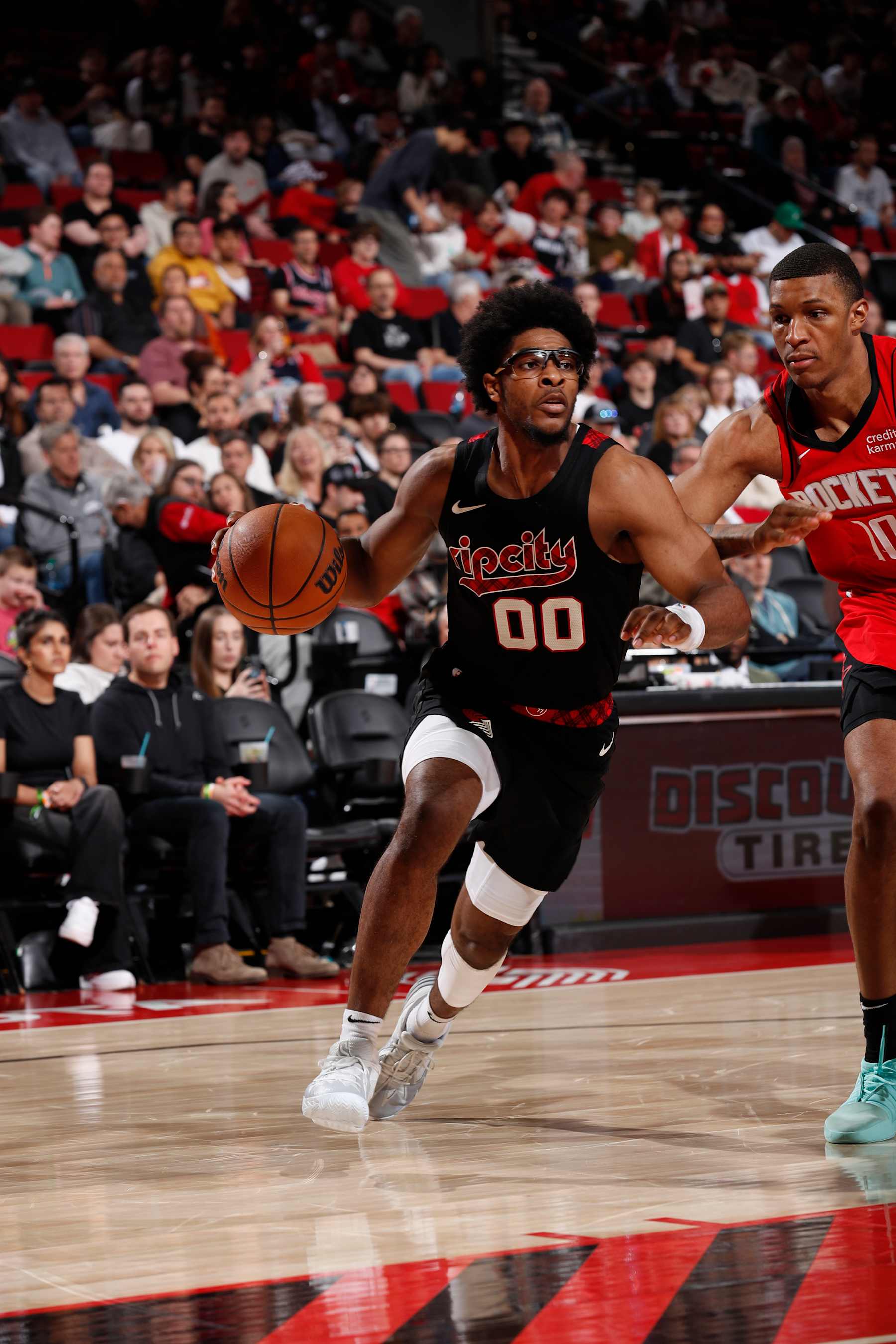
Cameron Browne/NBAE via Getty Images
The Portland Trail Blazers wish Scoot Henderson didn’t meet so many X-factor criteria, but the most important player in the organization didn’t do enough as a rookie to eliminate the possibility that he’ll be a bust.
Paired with the sky-high ceiling that got him selected at No. 3 in the 2023 draft, his floor makes him the perfect pick here.
The 20-year-old finished 2023-24 with averages of 14.0 points and 5.4 assists, but he shot the ball about as poorly as anyone could have imagined. His 48.9 true shooting percentage was the worst in the league among the 116 players who attempted at least 700 shots.
To be fair, he suffered an ankle injury early in his rookie year. That may have thrown off his rhythm, and rookie point guards already have a hard enough time adjusting to the NBA game. That he closed out the year by averaging 19.4 points and 9.7 assists in April augurs well for 2024-25 and beyond.
If Henderson performs like the version of himself that showed up in April, Portland may yet feel confident it has a franchise pillar in place. If not, its rebuild may need another high draft pick to really get off the ground.
Sacramento Kings: Keegan Murray
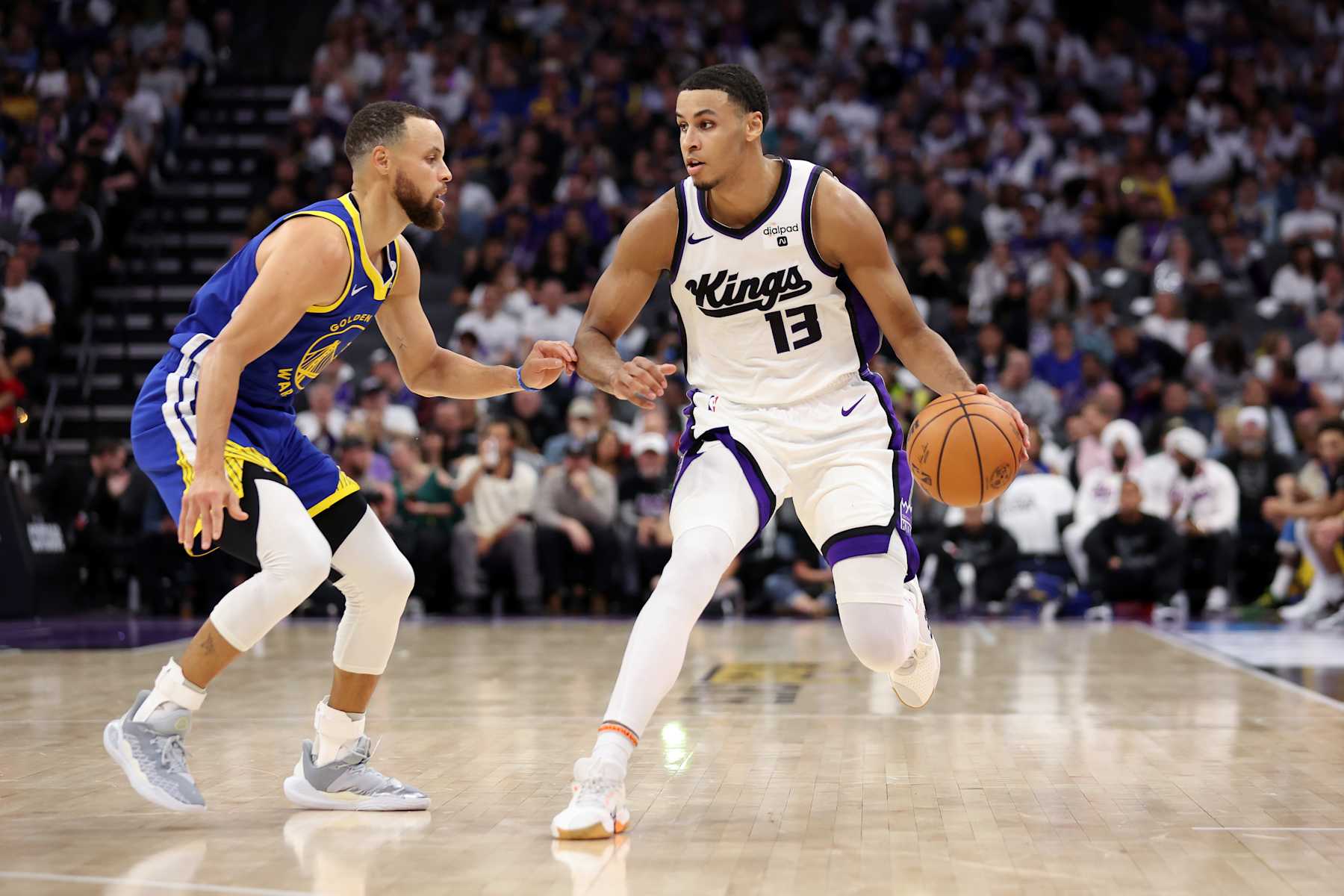
Ezra Shaw/Getty Images
Keegan Murray shot 41.1 percent from deep as a rookie and developed into a plus defender in his second season.
Though the introduction of DeMar DeRozan will probably mean a reduced offensive role for him in his third pro campaign, the combo forward will still have a chance to validate the love he gets from Sacramento Kings fans by growing into an elite three-and-D role player.
For some of Murray’s most-devout believers, a Mikal Bridges ceiling might seem too low. But we need to be realistic about his future. Given the construction of the Kings, who have multiple on-ball creators, the 24-year-old isn’t going to get the chance to spread his wings offensively any time soon—or maybe ever.
Let’s also keep in mind that nothing in the Iowa product’s brief NBA career suggests he even wants to be a high-usage offensive player. The Kings have spent two years trying to get him to shoot more often.
Ultimately, Murray is already a very good two-way starter. If he keeps making incremental improvements and eventually embraces the selfishness his team has been trying to coax out of him, it’s possible he’ll become something closer to a star—just as De’Aaron Fox and Domantas Sabonis need someone to share more of the load.
San Antonio Spurs: Stephon Castle
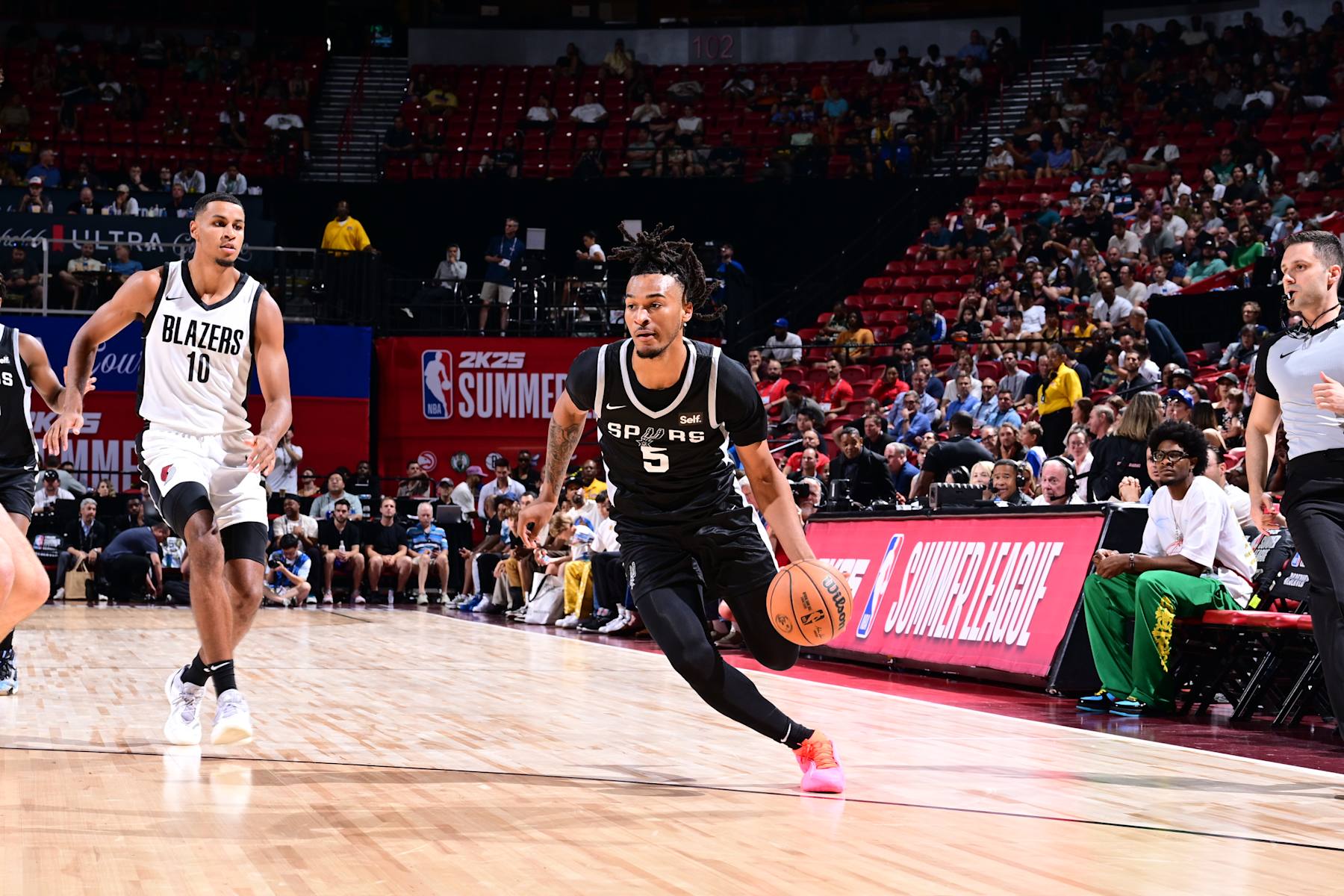
Adam Hagy/NBAE via Getty Images
It doesn’t feel right to choose Victor Wembanyama here, even if he’s the player who’ll have the most influence on the San Antonio Spurs’ next decade.
Barring injury, there’s really not much doubt the 2023 No. 1 pick will become a superstar. For him, the question isn’t whether he’ll contend for MVP awards, it’s how many he’ll win.
Stephon Castle is less of a known commodity, and the Spurs will spend much of 2023-24 and beyond trying to get a sense of what he might become.
Picked fourth in the 2024 draft, he is positionally ambiguous. Though he may simply settle into a wing role as a secondary scorer and facilitator, it’s also possible his playmaking chops allow him to man the point guard spot while defending multiple positions.
The UConn product is a well-built 6’6″ with excellent burst on drives. If he can reform his jumper to the point opponents have to honor him on the perimeter, stardom is a possibility.
As it stands, Castle’s poor shooting and unclear positional role make him something of a mystery—one with a perfect level of X-factor upside.
Toronto Raptors: Immanuel Quickley
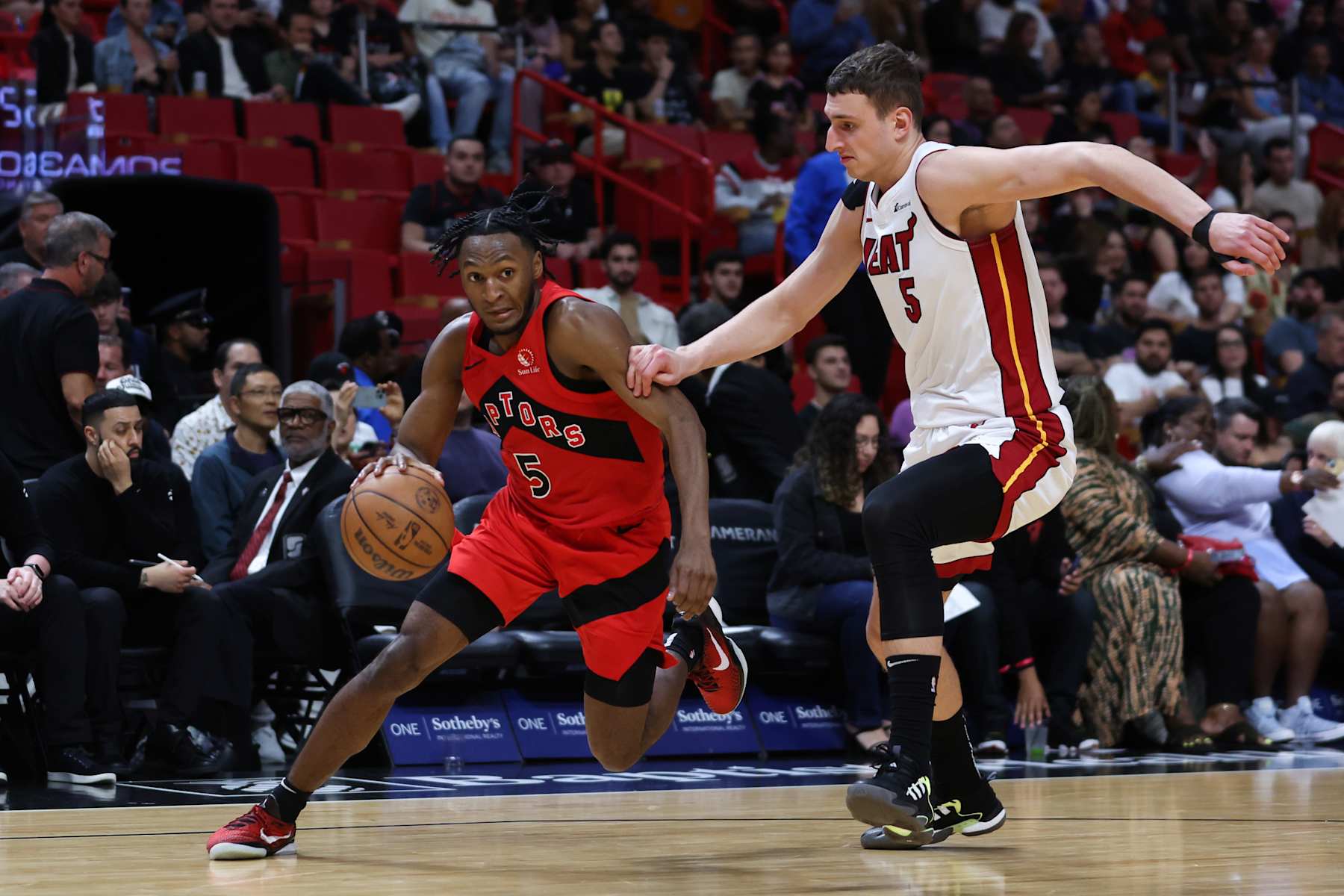
Megan Briggs/Getty Images
The Toronto Raptors will proceed into their next era with either one or two legitimate stars.
Immanuel Quickley will determine which number ends up being correct.
Scottie Barnes probably would have won Most Improved Player if he’d stayed healthy last season, and he’s already got an All-Star nod and a max contract to his name at the ripe old age of 23. He’s the certainty. Quickley, though, isn’t yet similarly established.
The Raptors handed the point guard a five-year, $162.5 million contract after trading for him last season, so they’ve certainly seen something in his profile that suggests he can join Barnes as a co-leader of the next great Toronto squad. The 18.6 points and 6.8 assists he averaged in 38 starts with the Raptors last year put some evidence behind that belief.
Still, Quickley is already 25 and has a career true shooting percentage below the league average. To justify Toronto’s investment and give the franchise hope that he’s a tentpole player, he may need to make those 18.6 points and 6.8 assists a baseline from which he works his way up.
Anything less than that, and the Raptors might not get the bang-for-buck value they need in Barnes’ top running mate.
Utah Jazz: Keyonte George
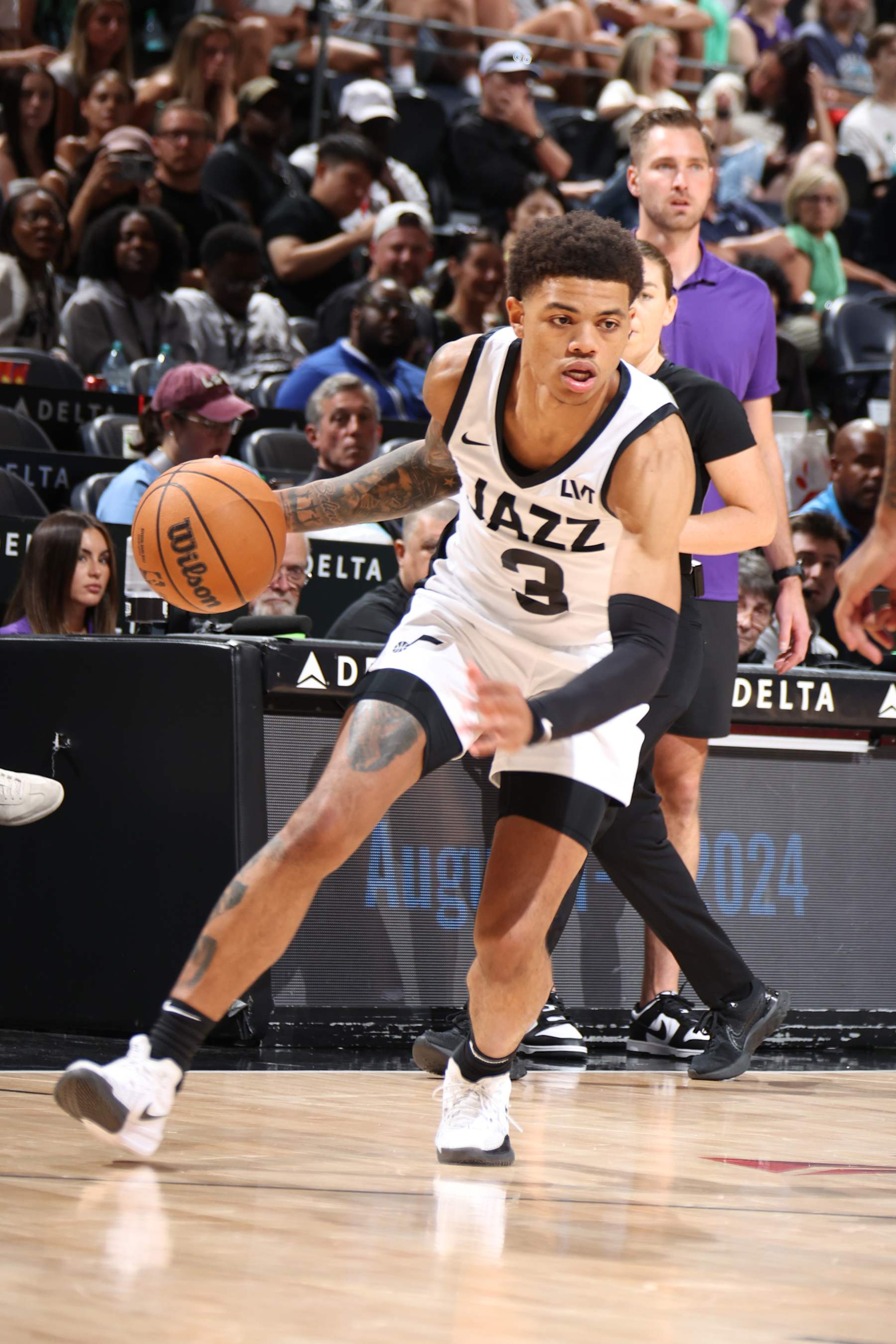
Melissa Majchrzak/NBAE via Getty Images
Thrust into an outsized role as a 20-year-old rookie, Keyonte George took his lumps.
Though 13.0 points and 4.4 assists in 27.0 minutes per game were enough to earn him an All-Rookie second-team honor, he predictably struggled to get his numbers efficiently. His 39.1 percent hit rate from the field was dead-last among all 92 players who took at least 800 shots last season.
Hardships like that should be the expectation for a relatively raw prospect trying to figure out the most nuanced position on the floor. The Baylor product still flashed three-level scorer capabilities and, on some nights, looked like a prospect who could create his own shot anywhere on the floor.
He peppered in plenty of lows—ugly turnovers, snoozy defense—among the highs. And if his efficiency remains this poor, it’ll be hard to see him becoming anything but a bench scorer.
The upside is there, though. Geroge has some competition from Taylor Hendricks, Cody Williams and perhaps even Walker Kessler (if he’s in Utah’s long-term plans), but he seems like the closest thing to a high-end prospect the Jazz have on the roster.
Washington Wizards: 2025 1st-Round Pick
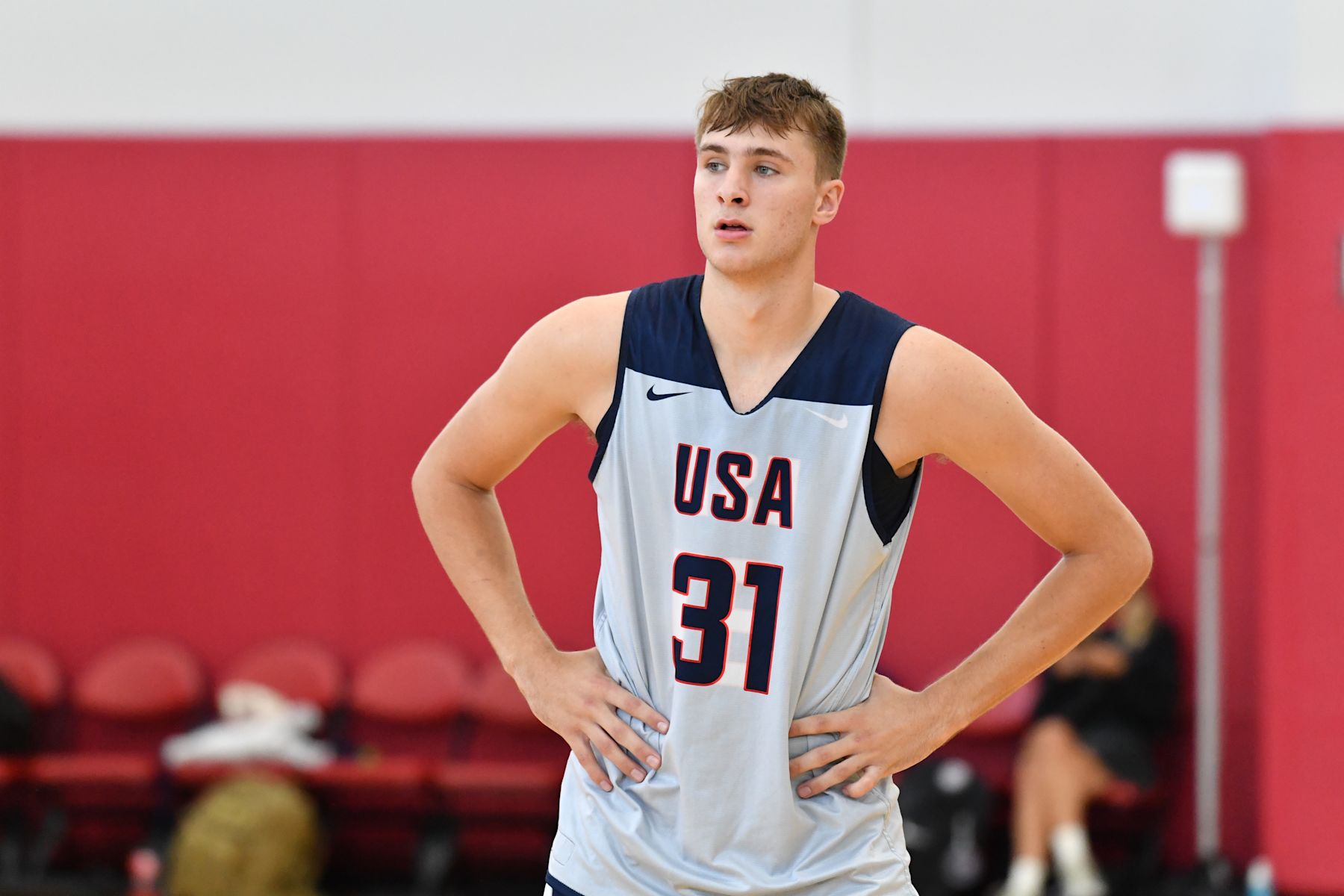
Juan Ocampo/NBAE via Getty Images
Alex Sarr, Bilal Coulibaly and Bub Carrington are the only live bodies on the Washington Wizards’ roster with star upside. Any of the three would have been a defensible X-factor pick.
We’re still going with a complete unknown, though.
The Wizards’ 2025 first-rounder, which will hopefully land in the top four, offers the best chance at a truly transformative talent. Whether it’s Cooper Flagg, Ace Bailey or someone else, the player Washington lands near the top of next year’s lottery is bound to have a higher ceiling than anyone on the current roster.
That’s not meant as a shot at Sarr or anyone else. It’s just an acknowledgement that he probably would have gone somewhere closer to 10th than second in a draft of standard quality, and that Coulibaly has such a long way to go before anyone should feel safe projecting stardom in his future.
Leave a Reply